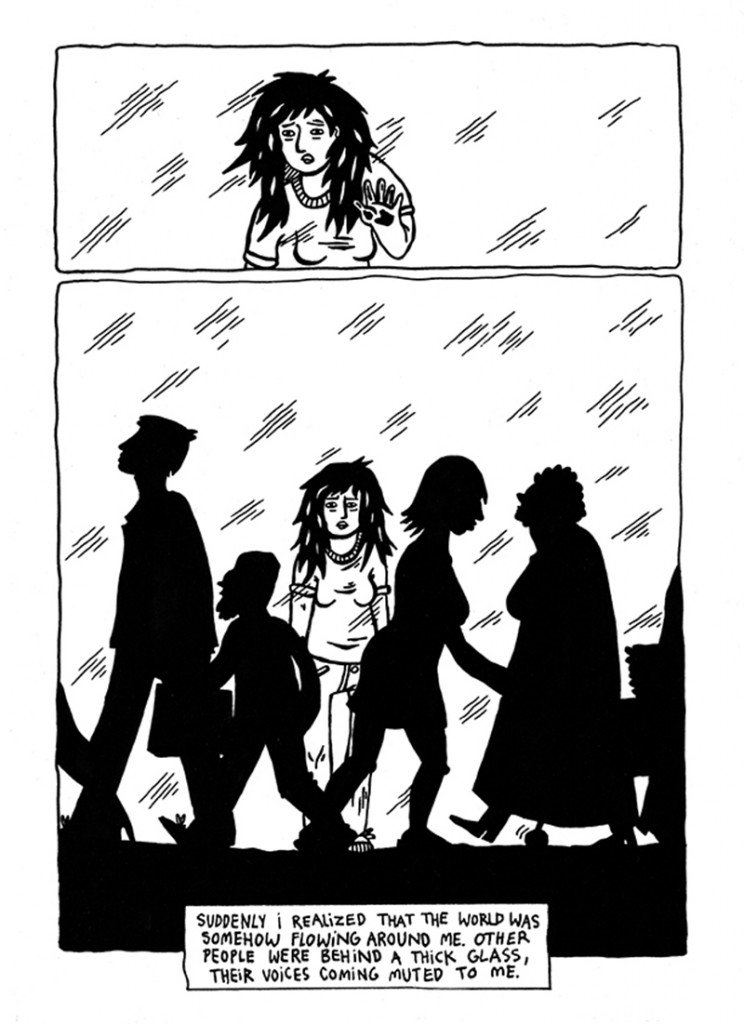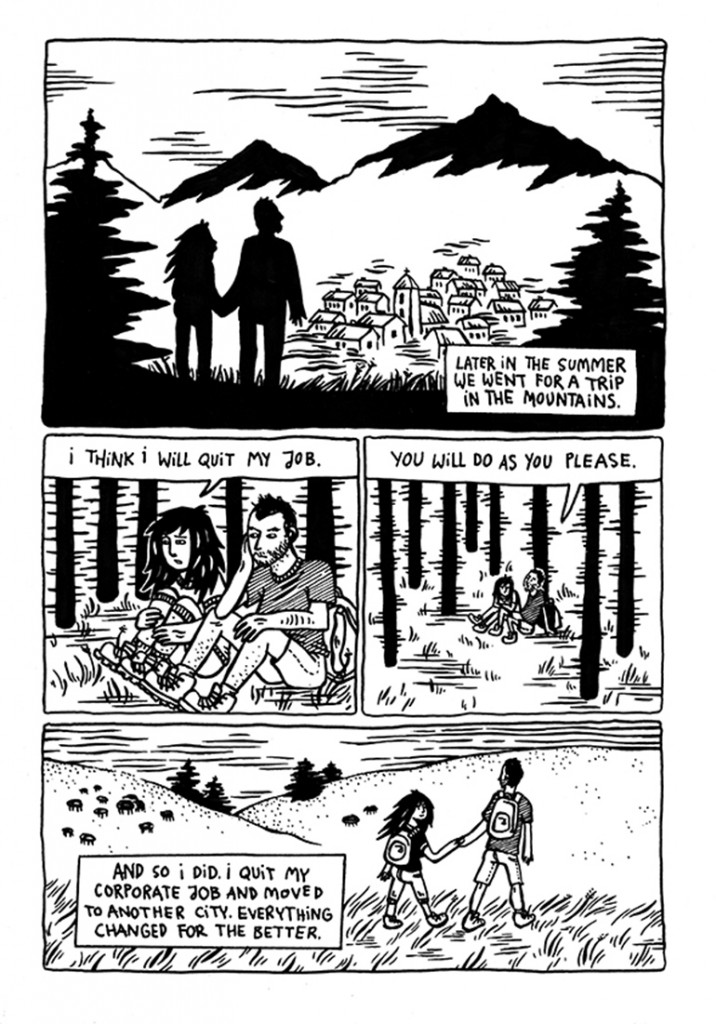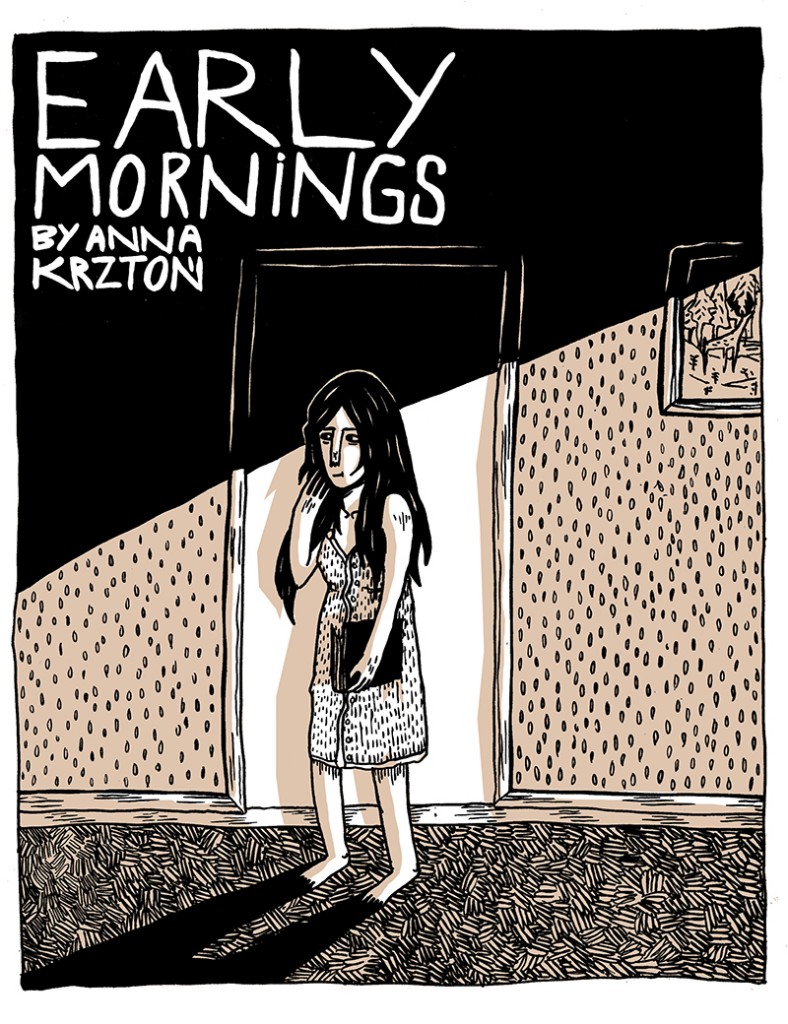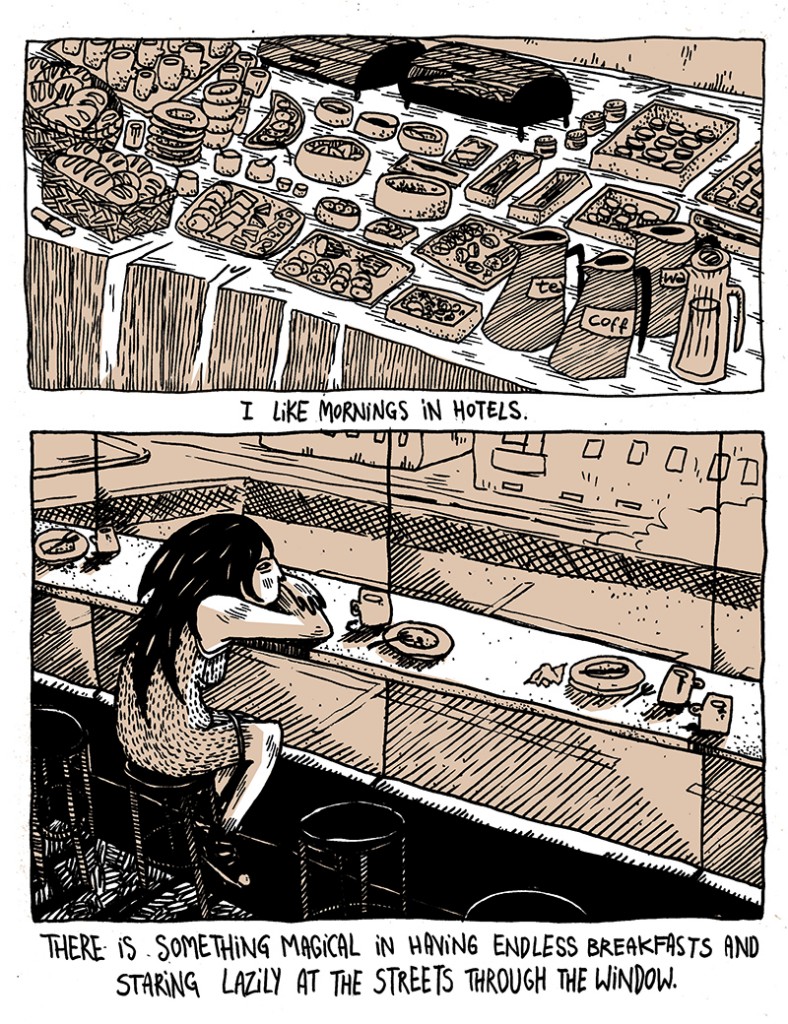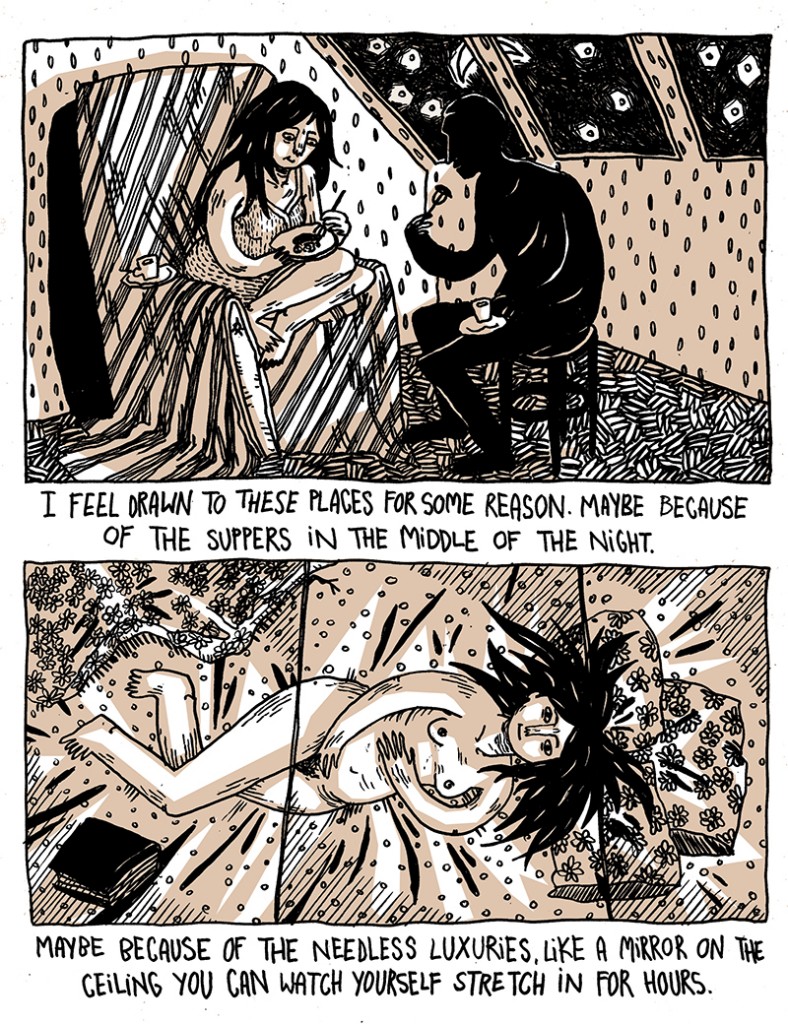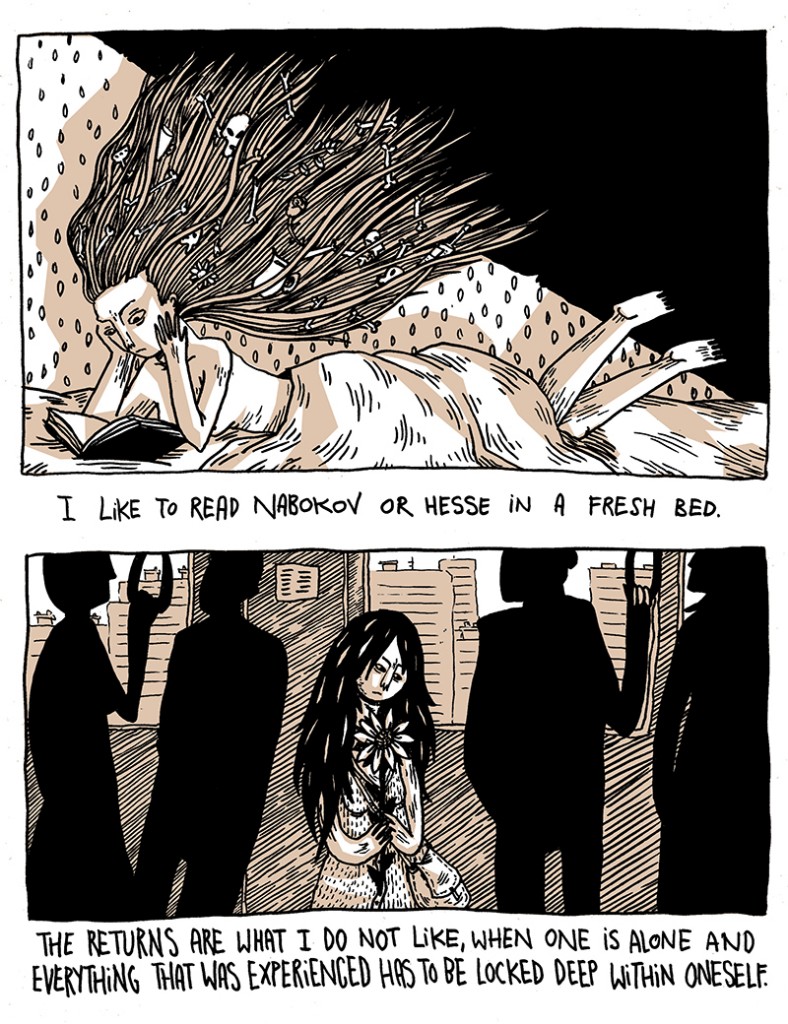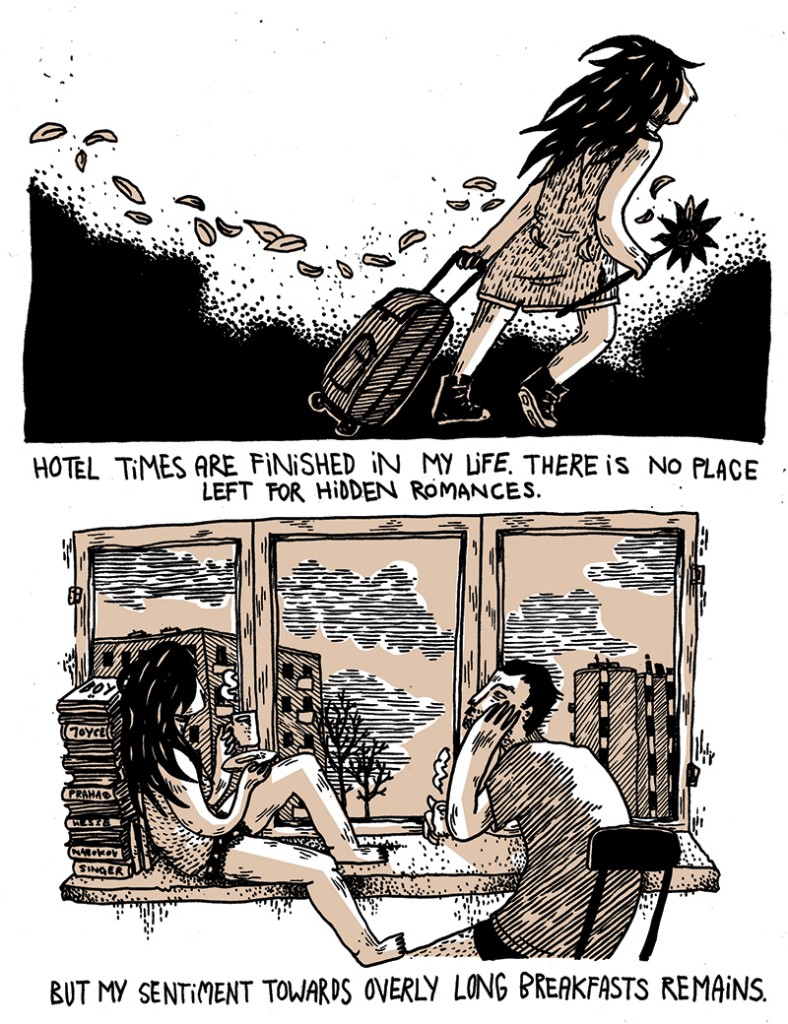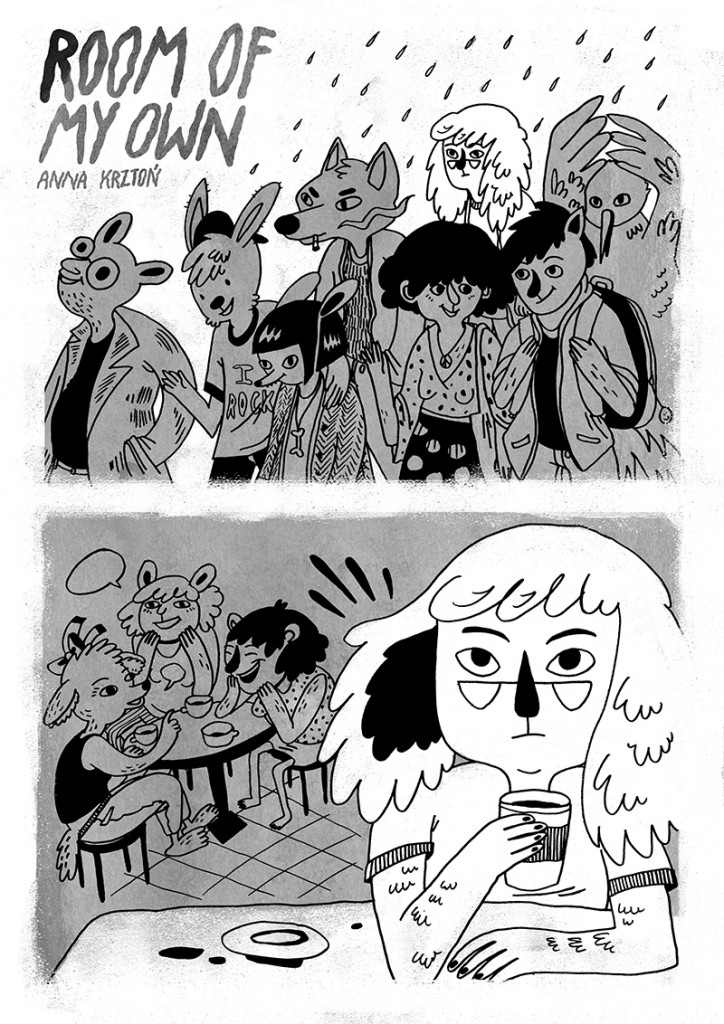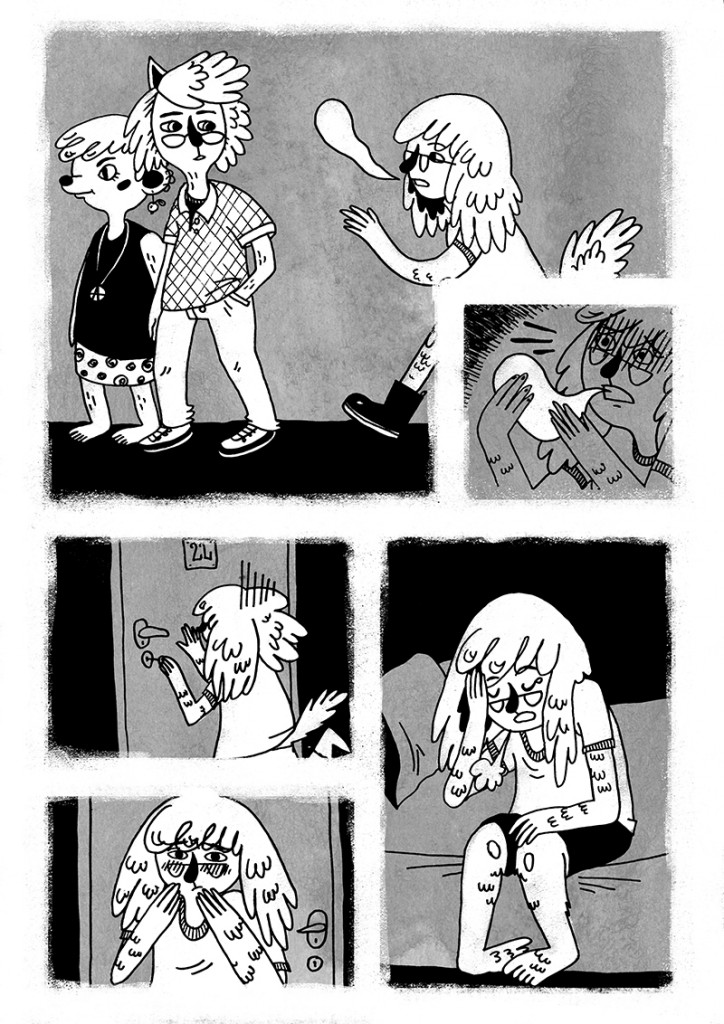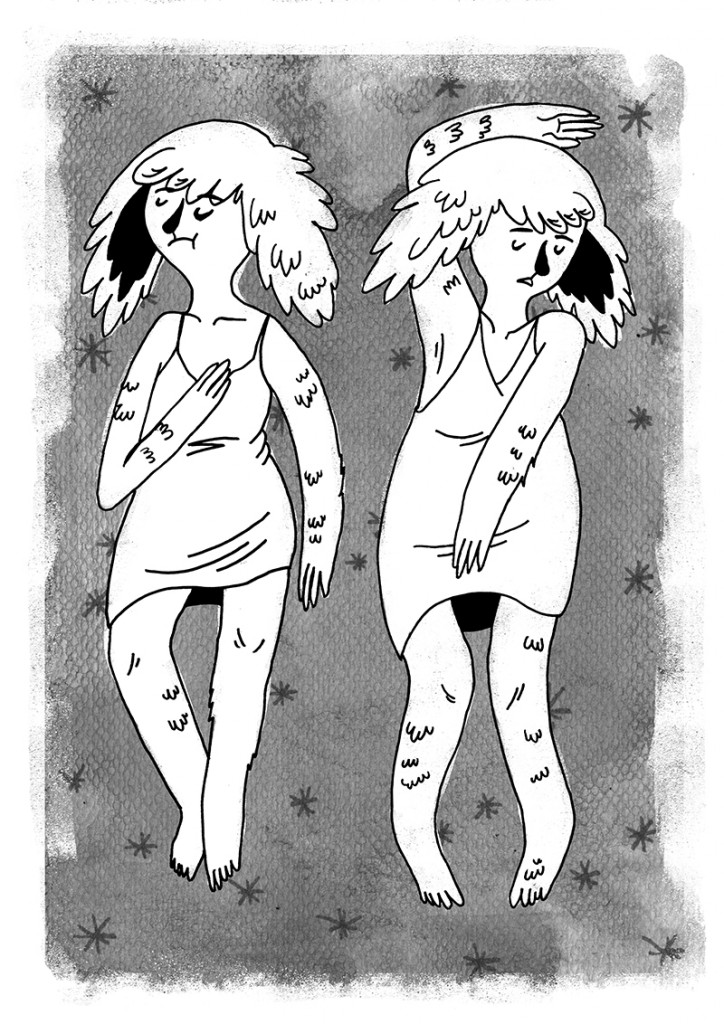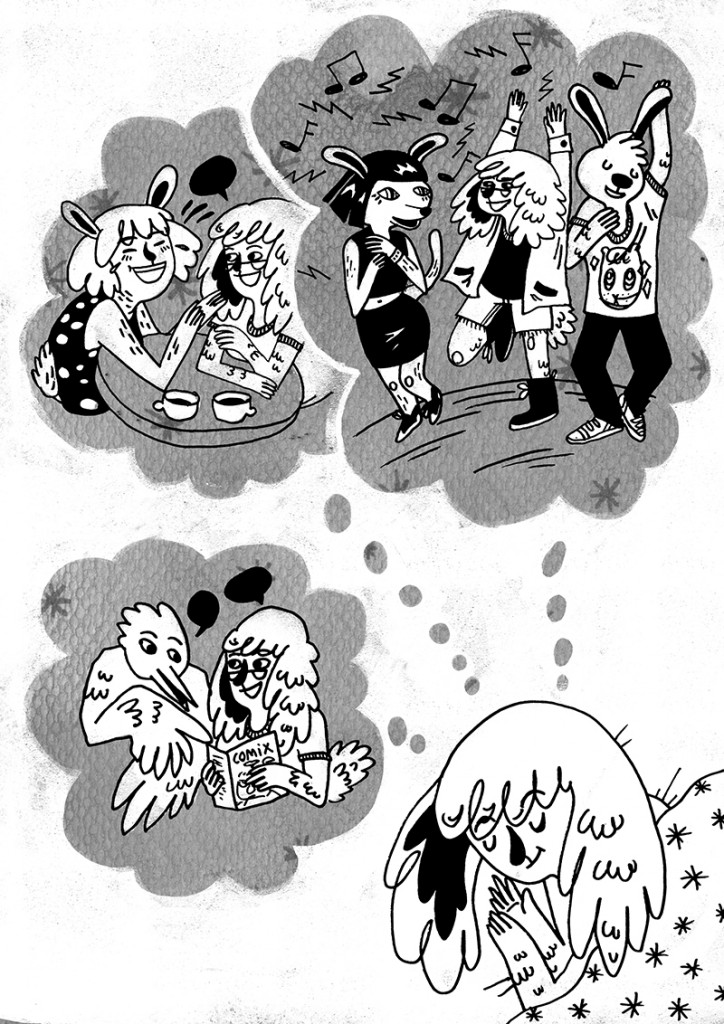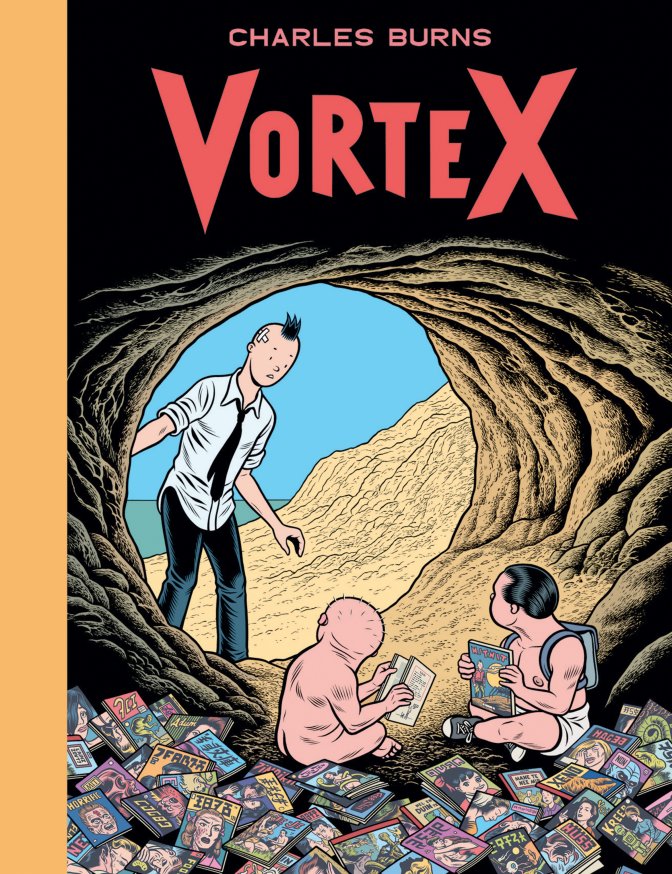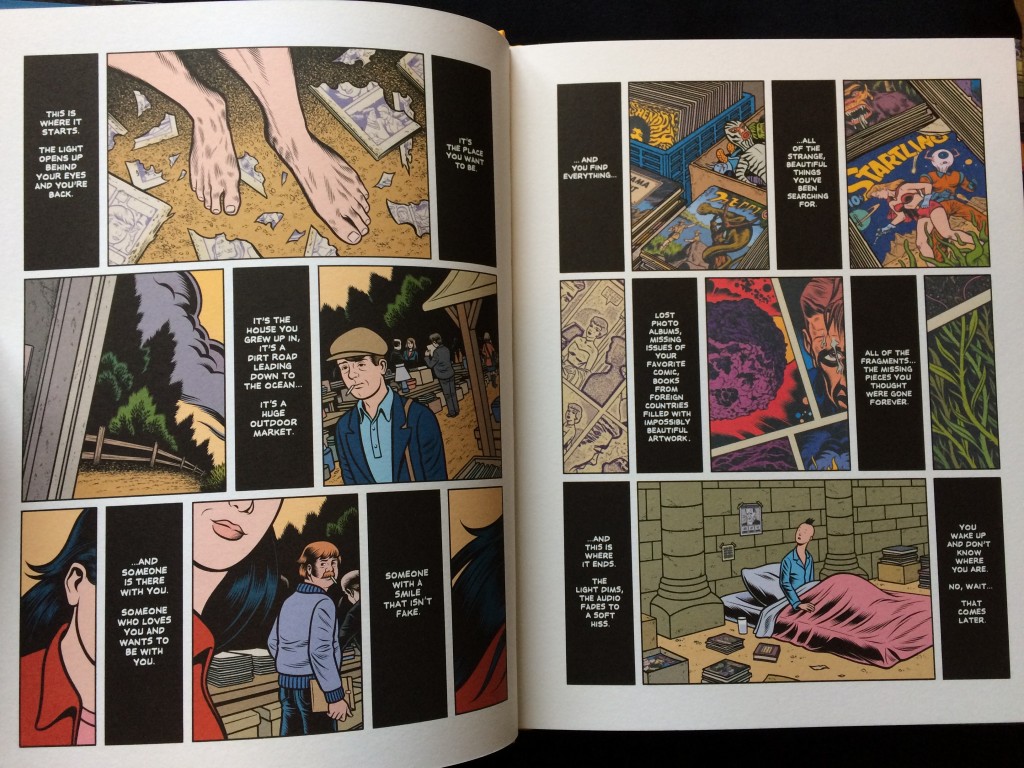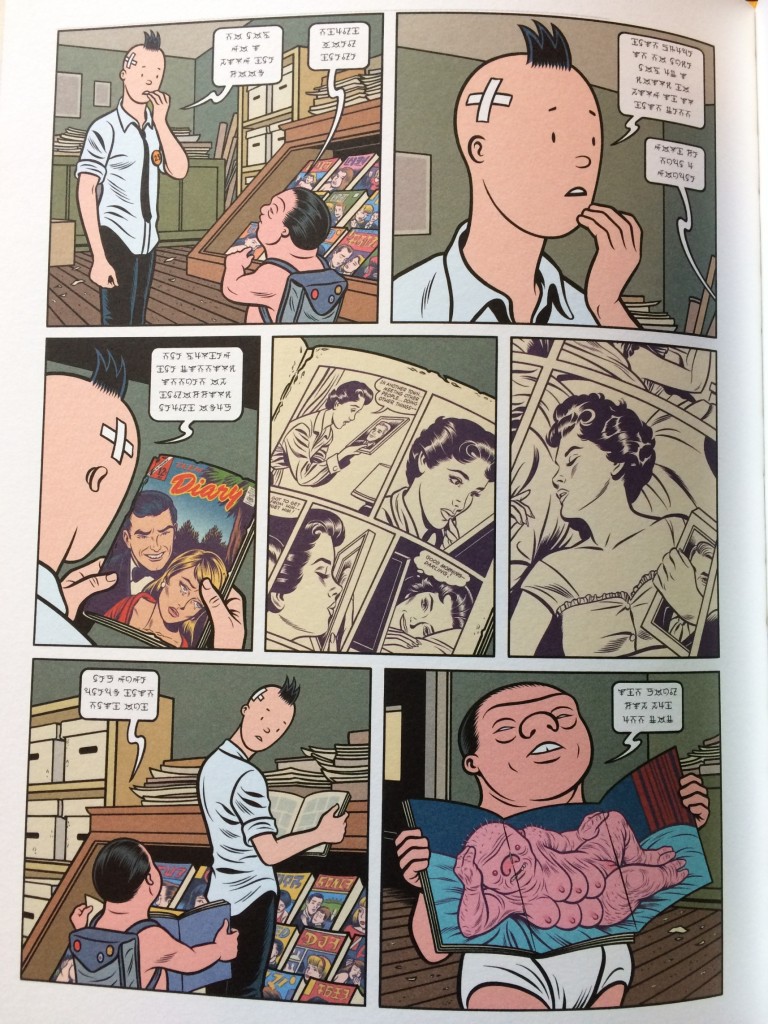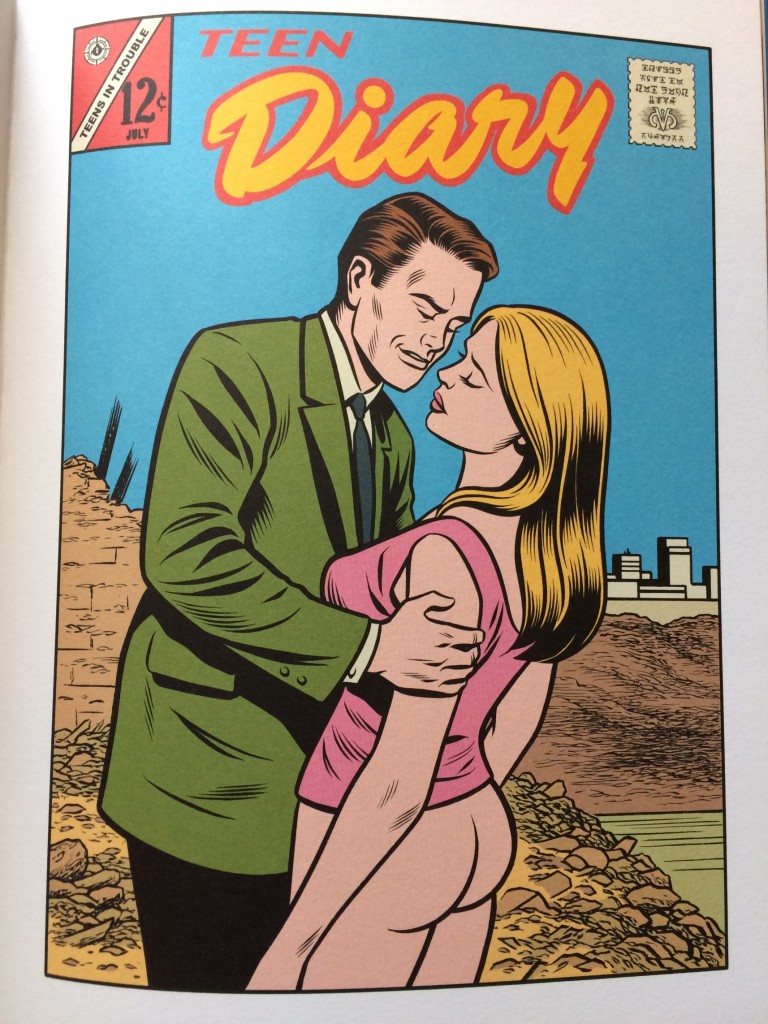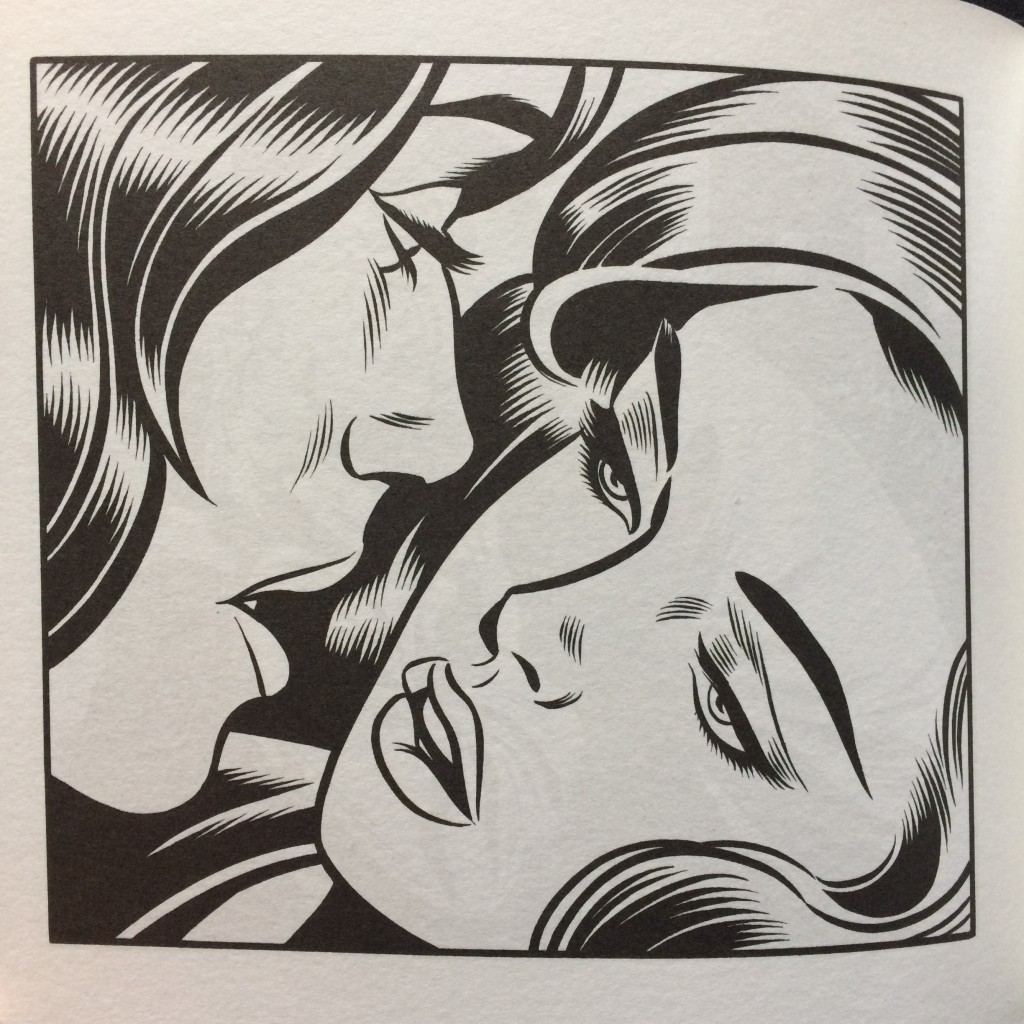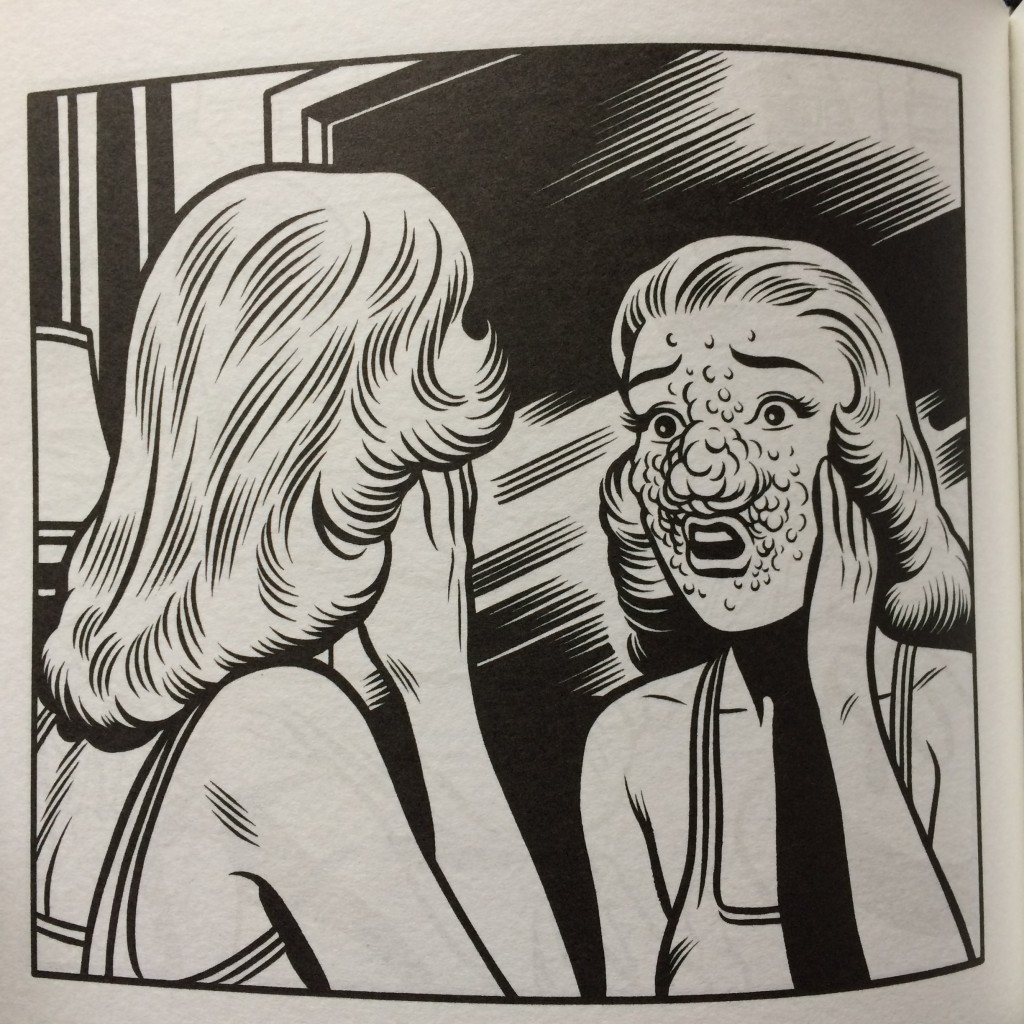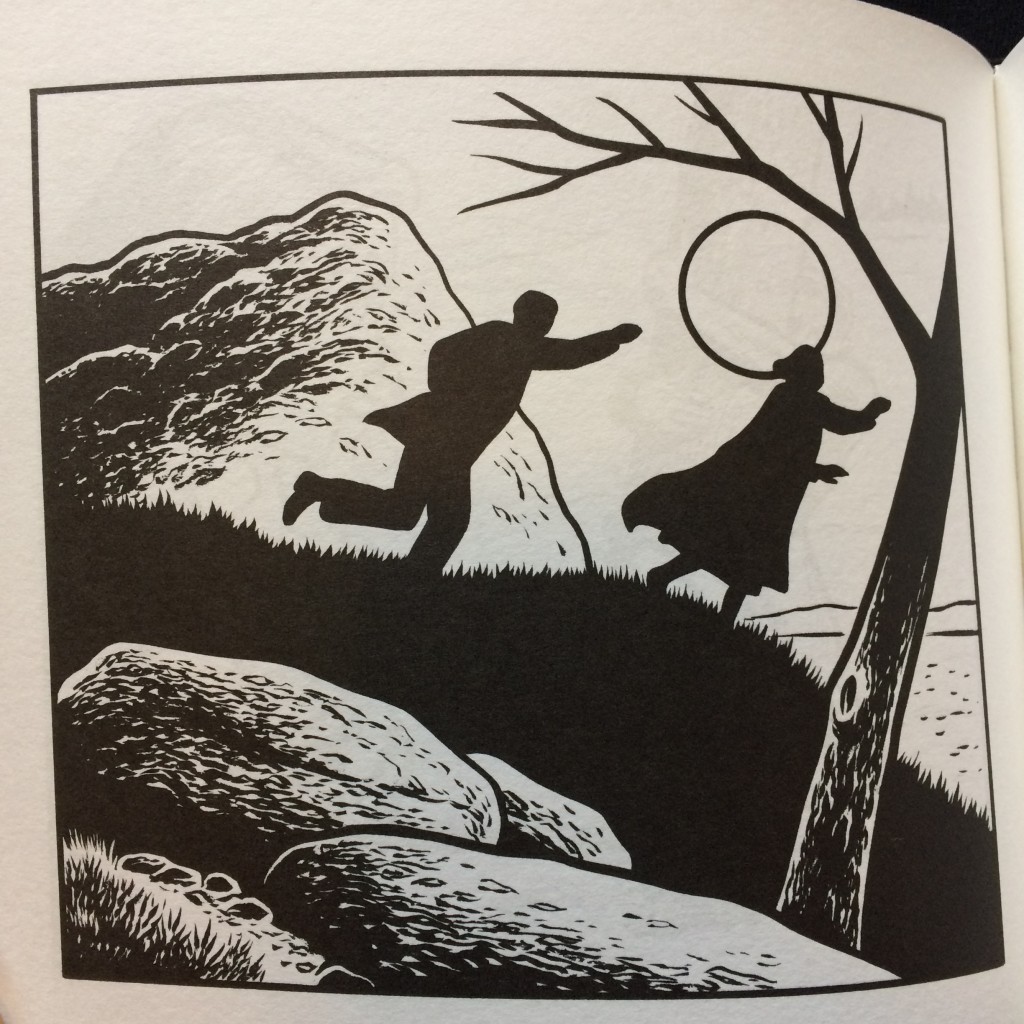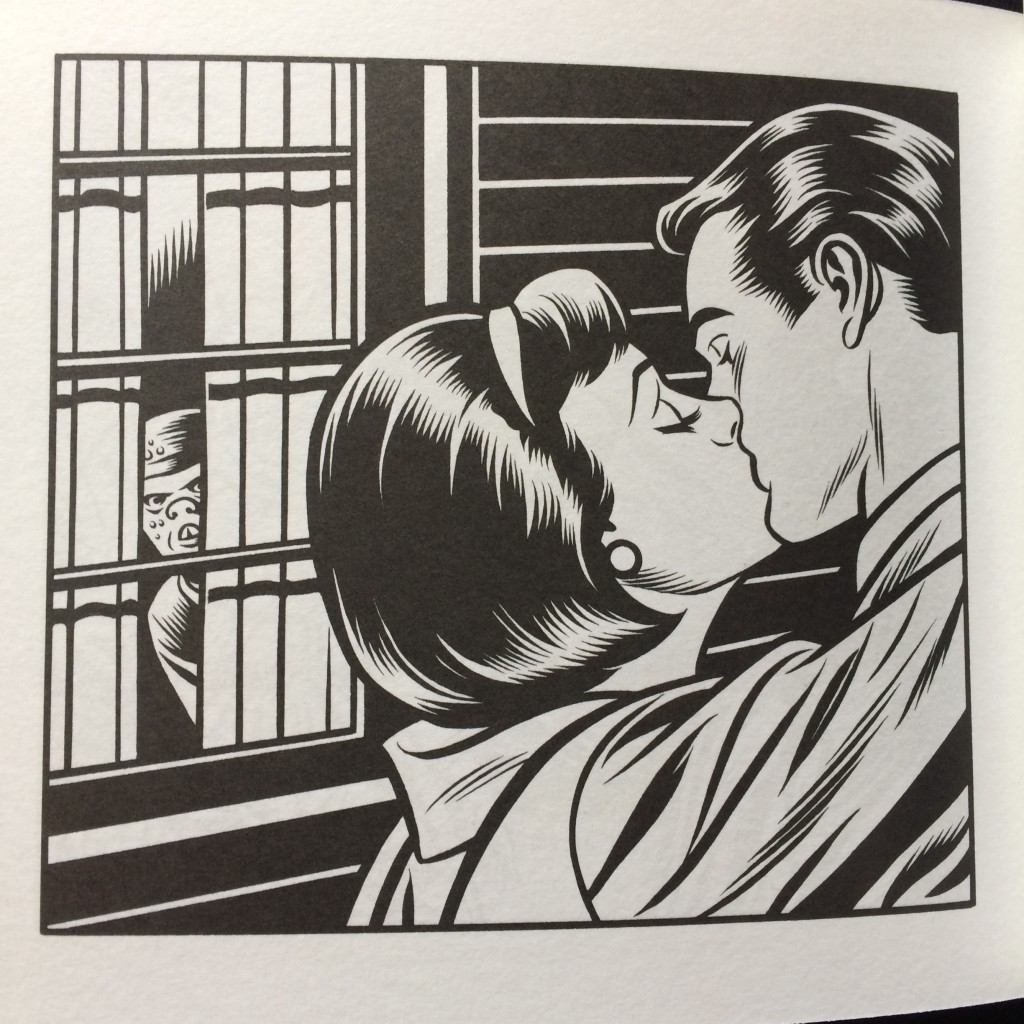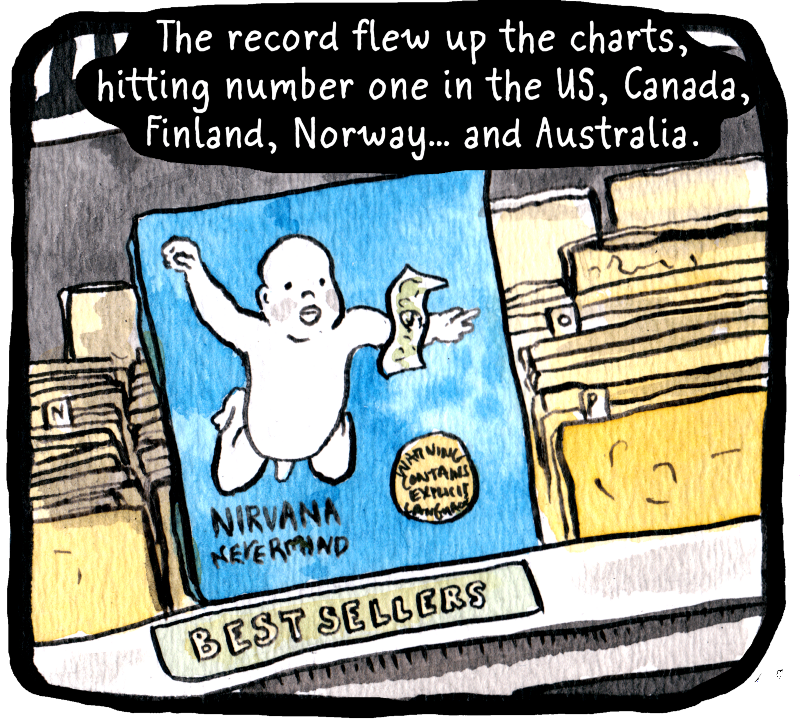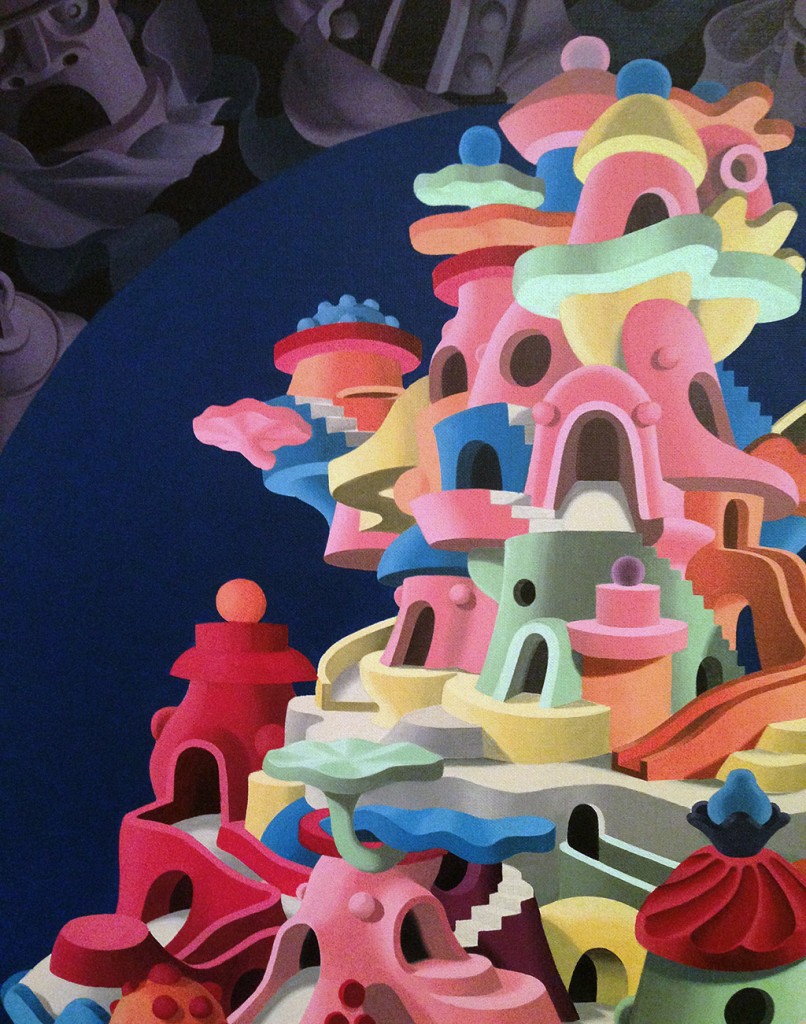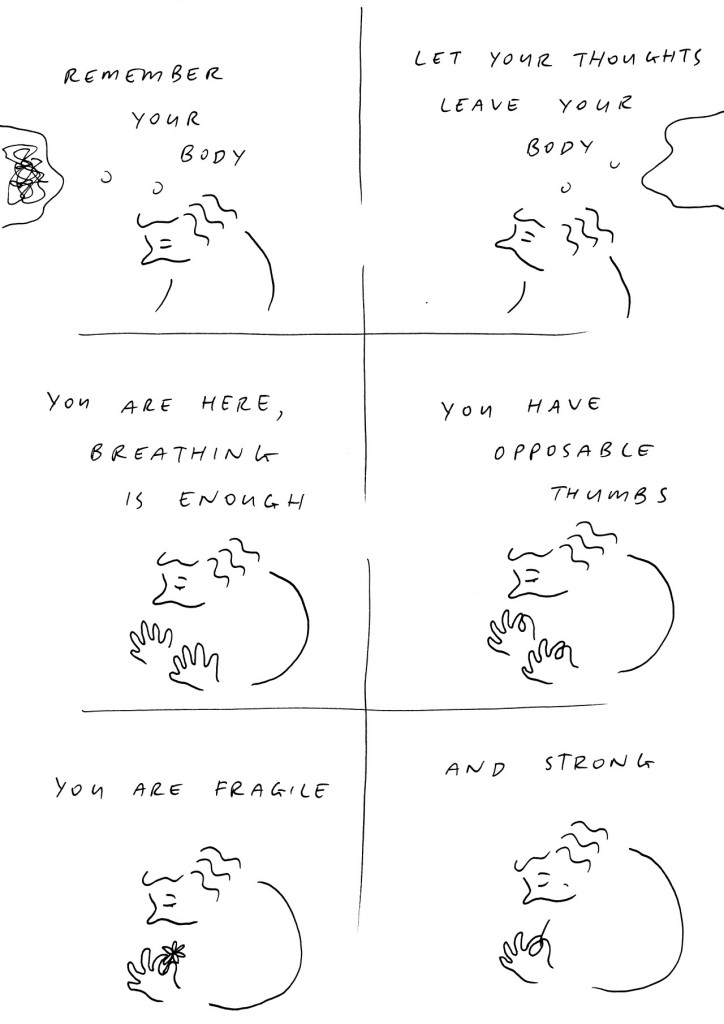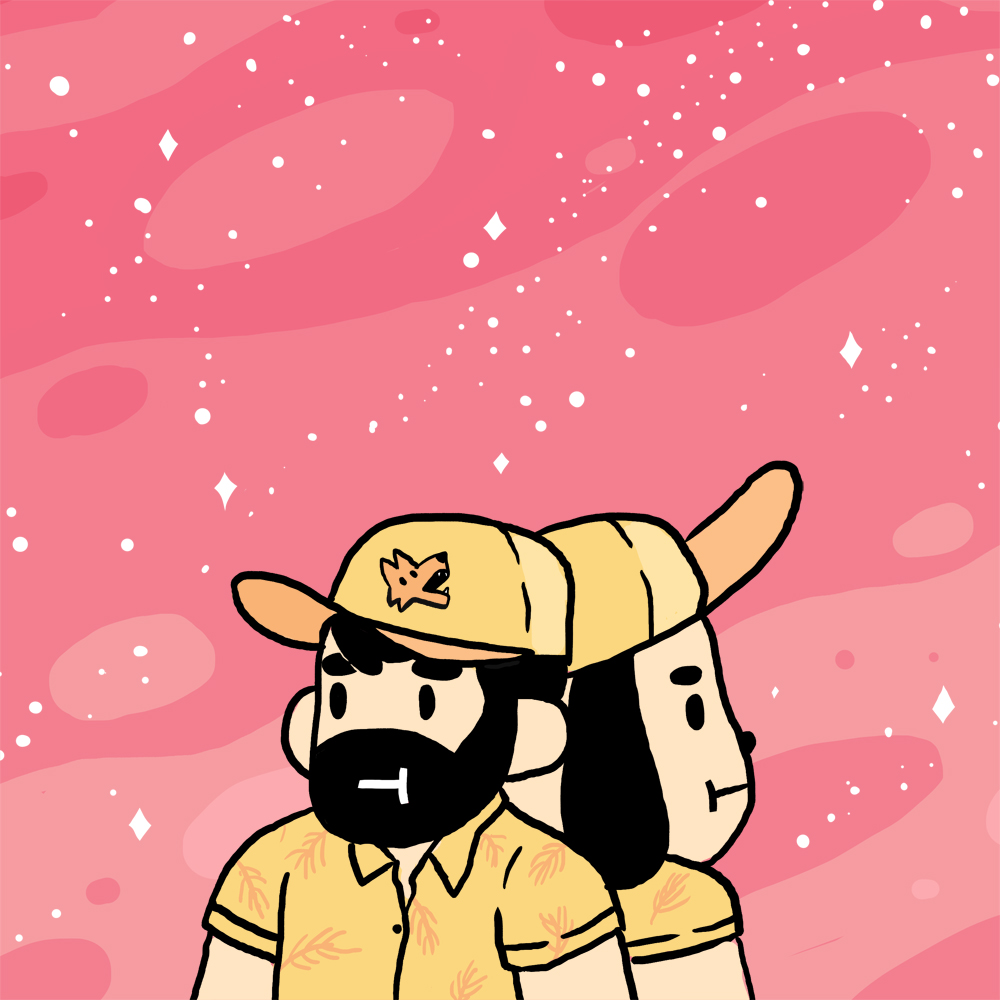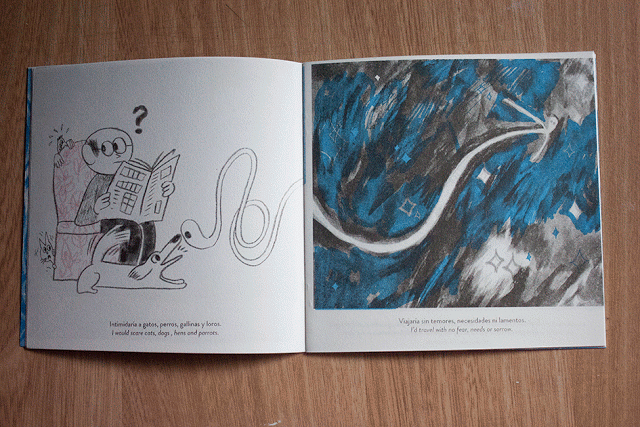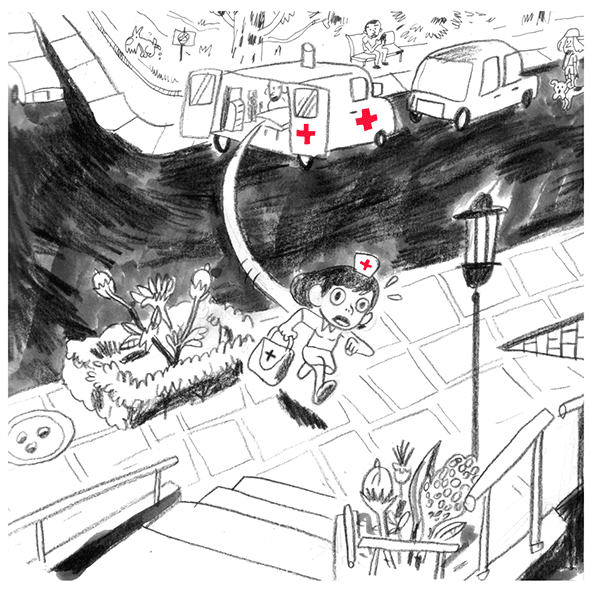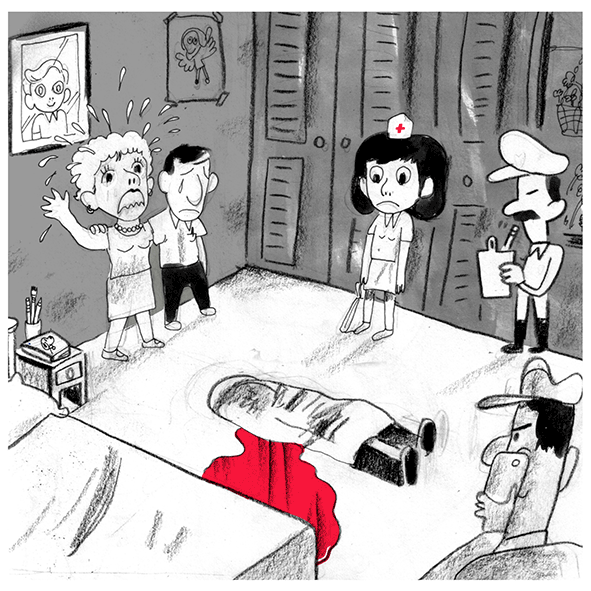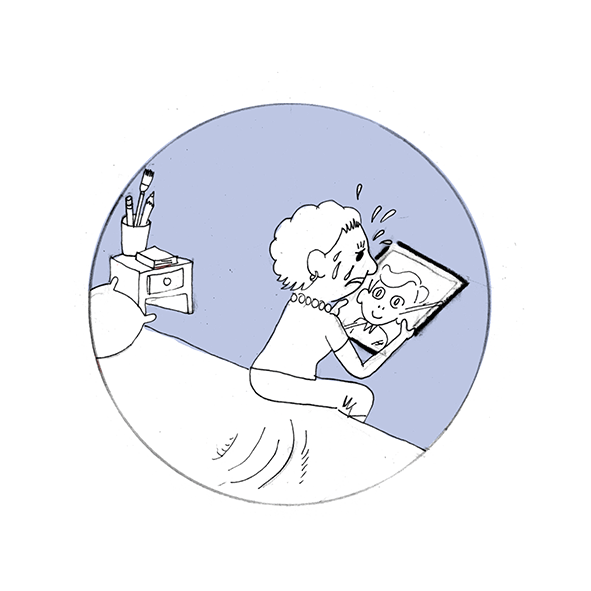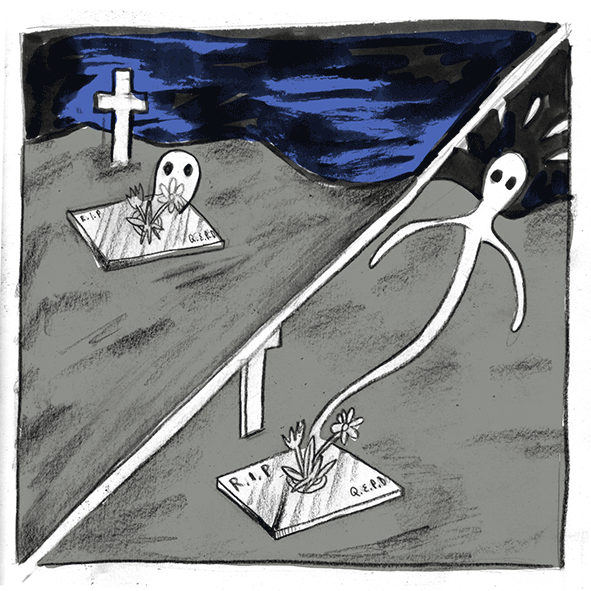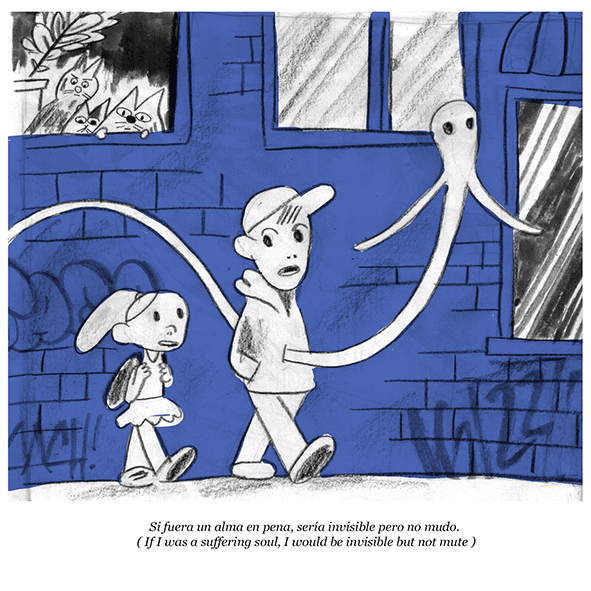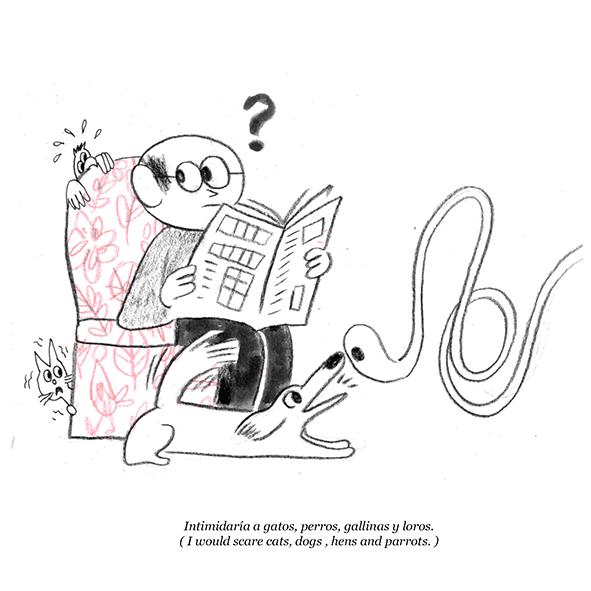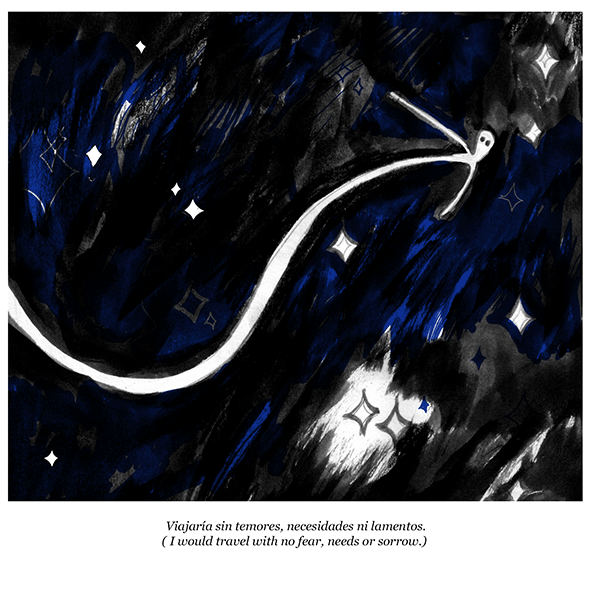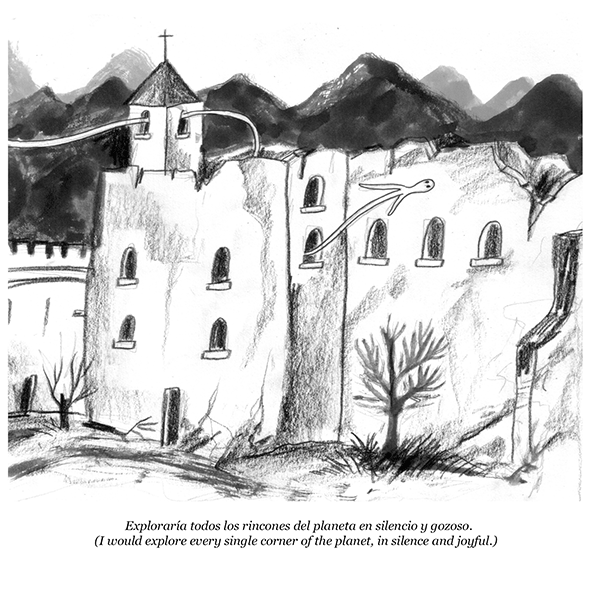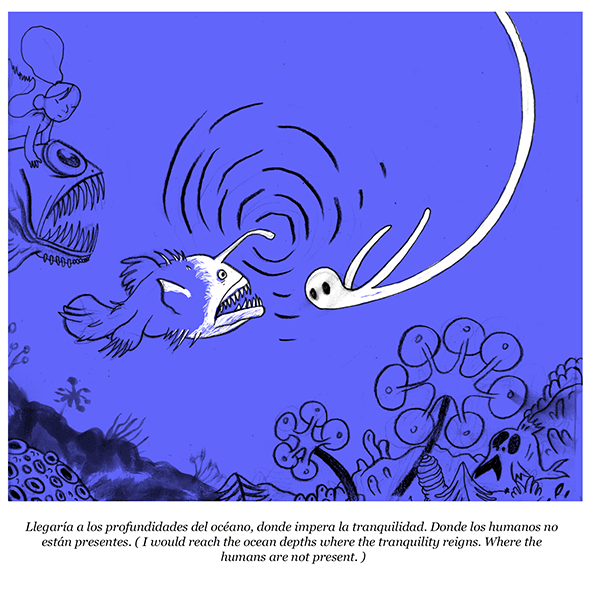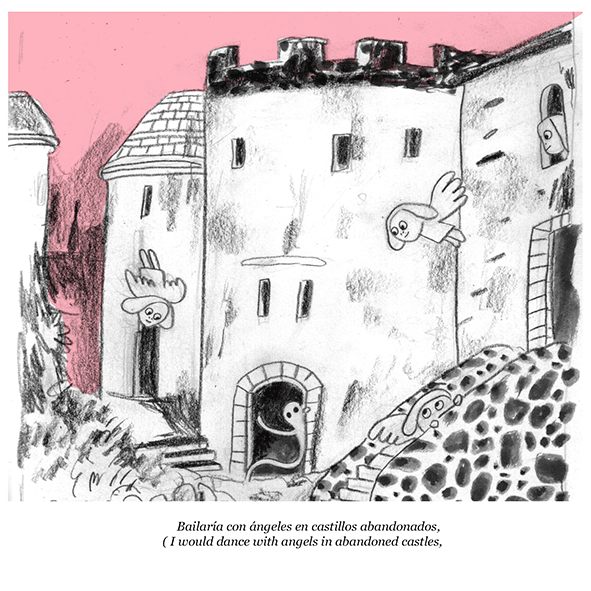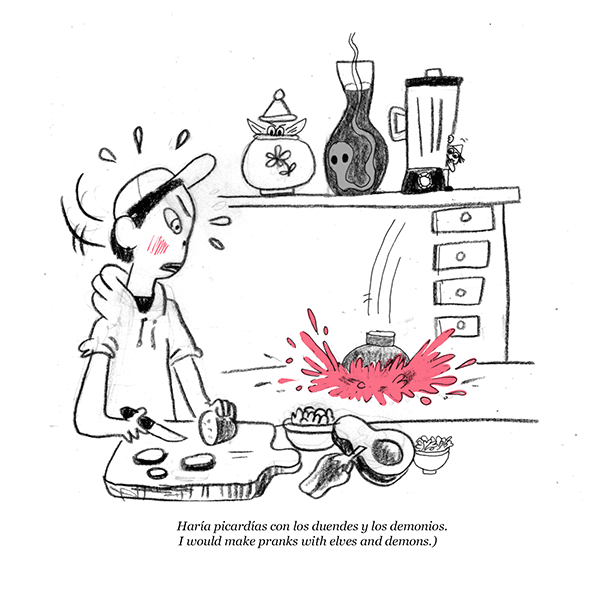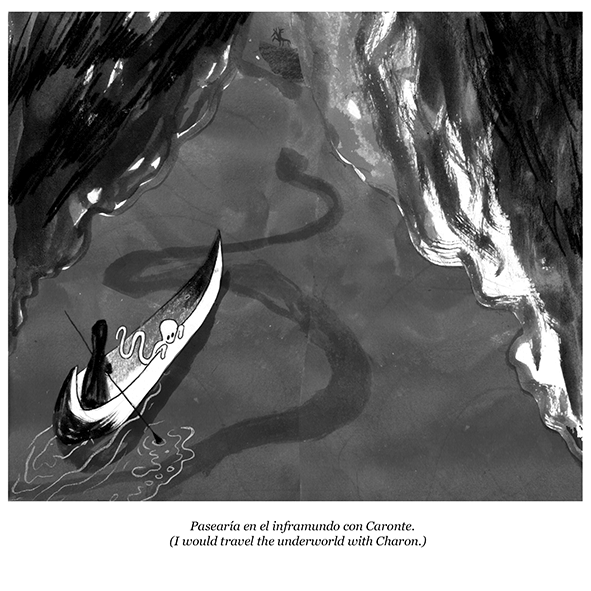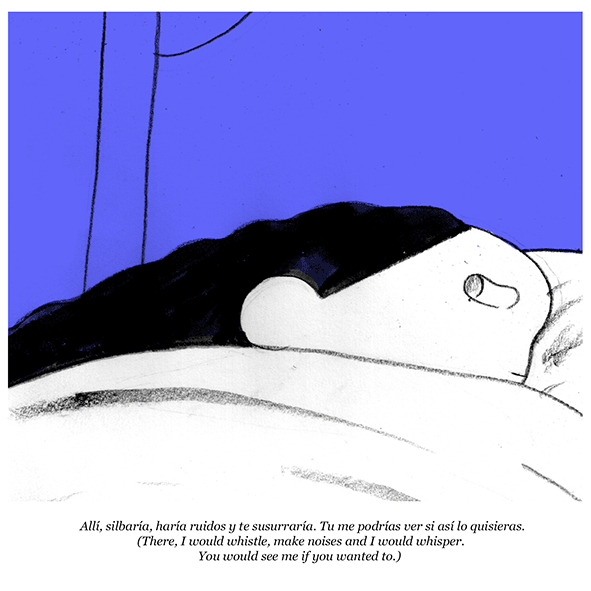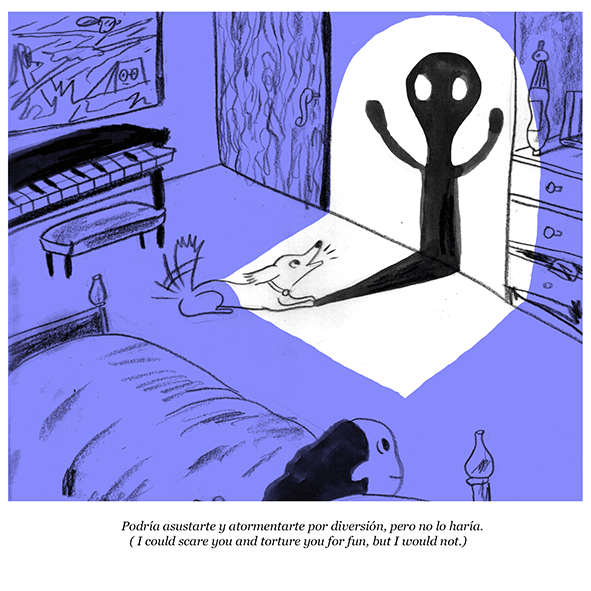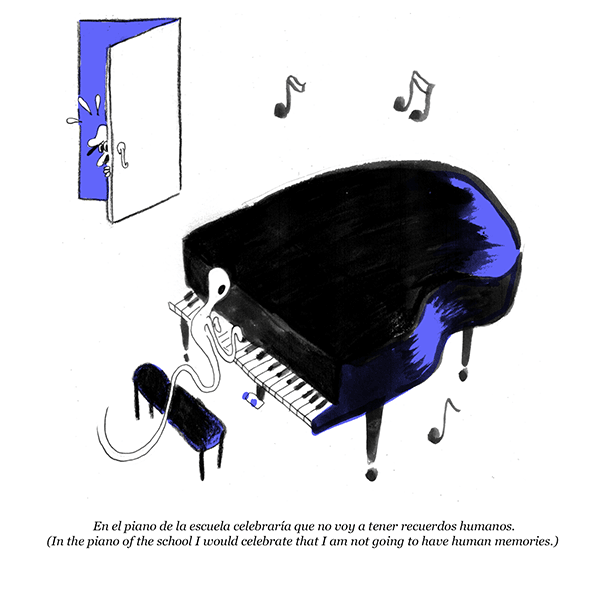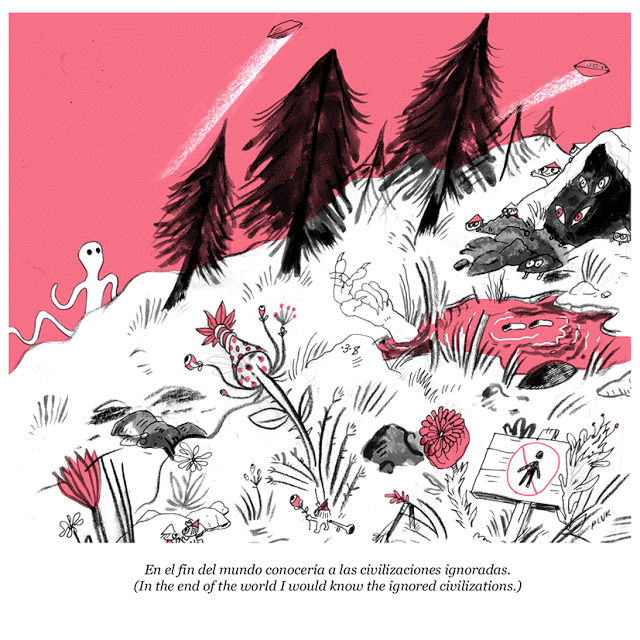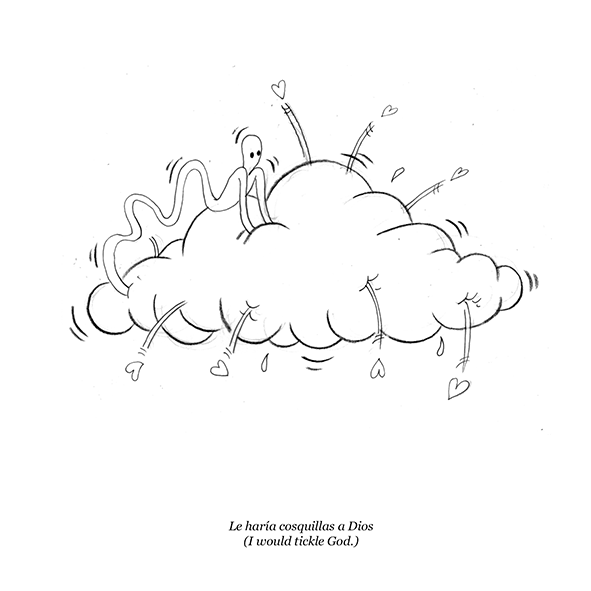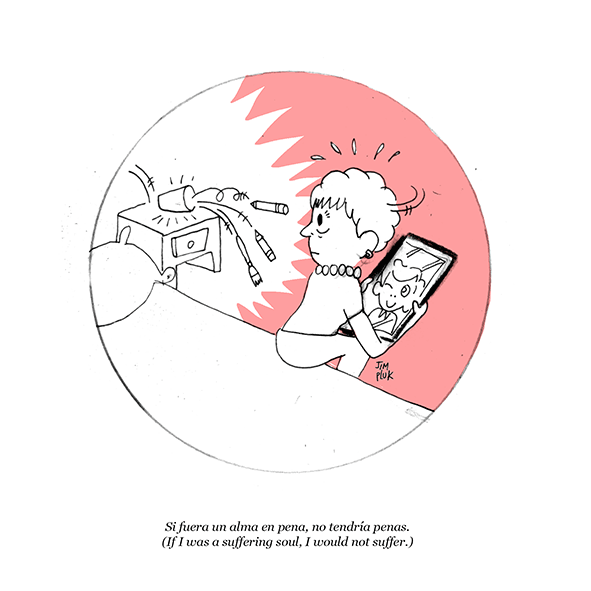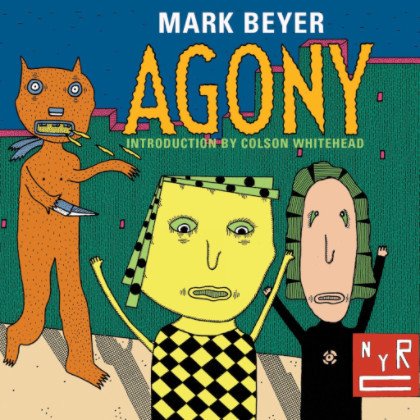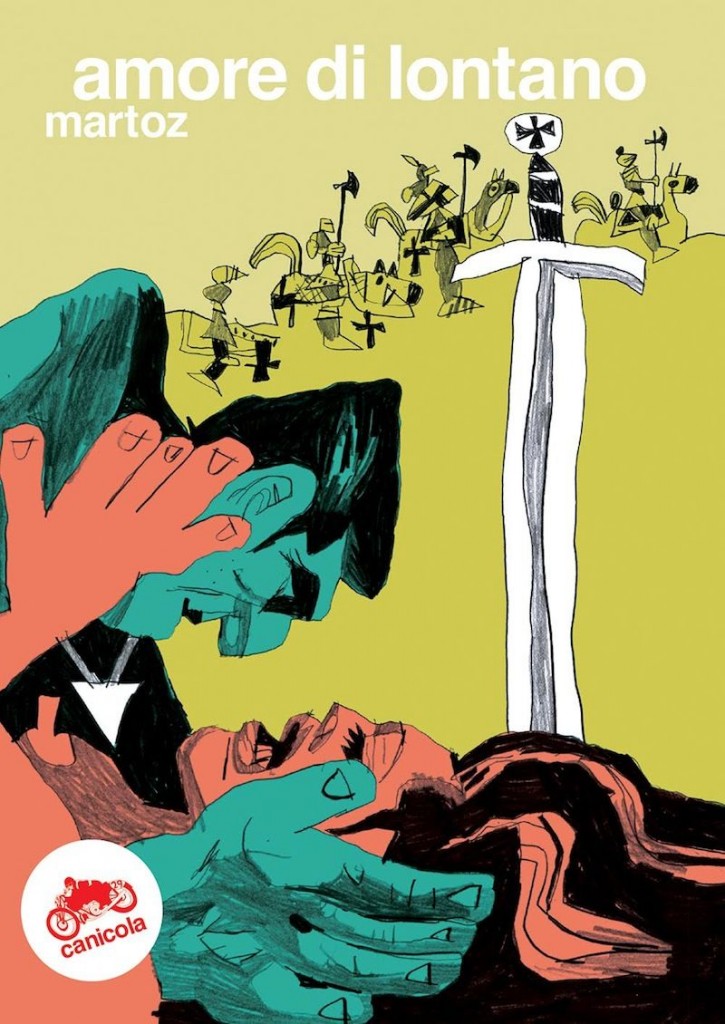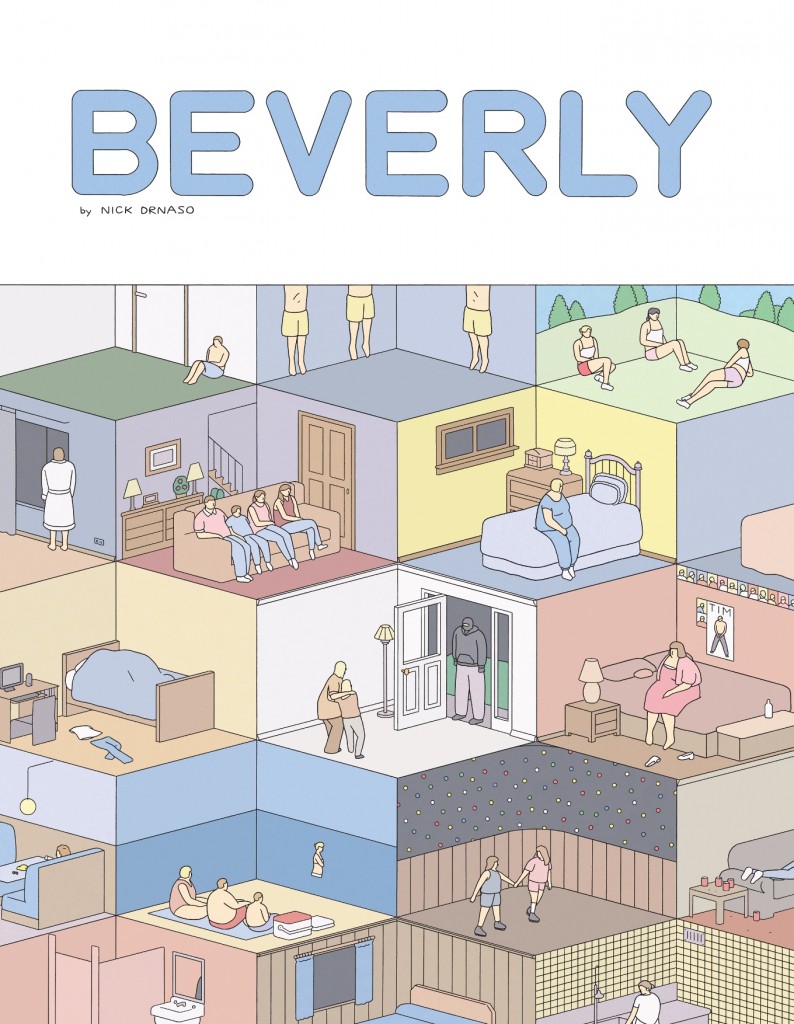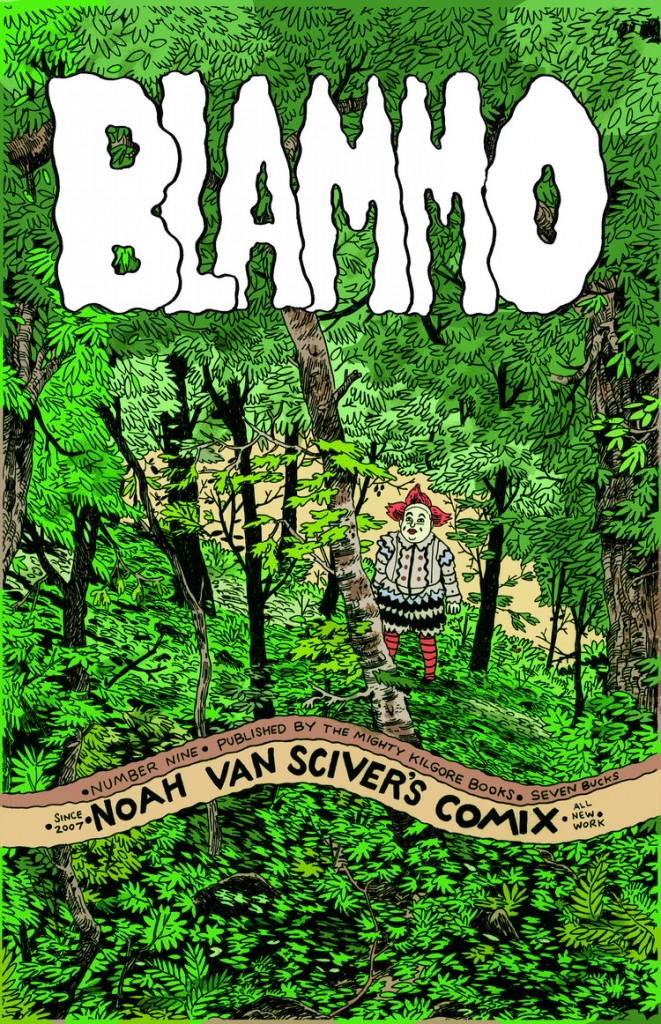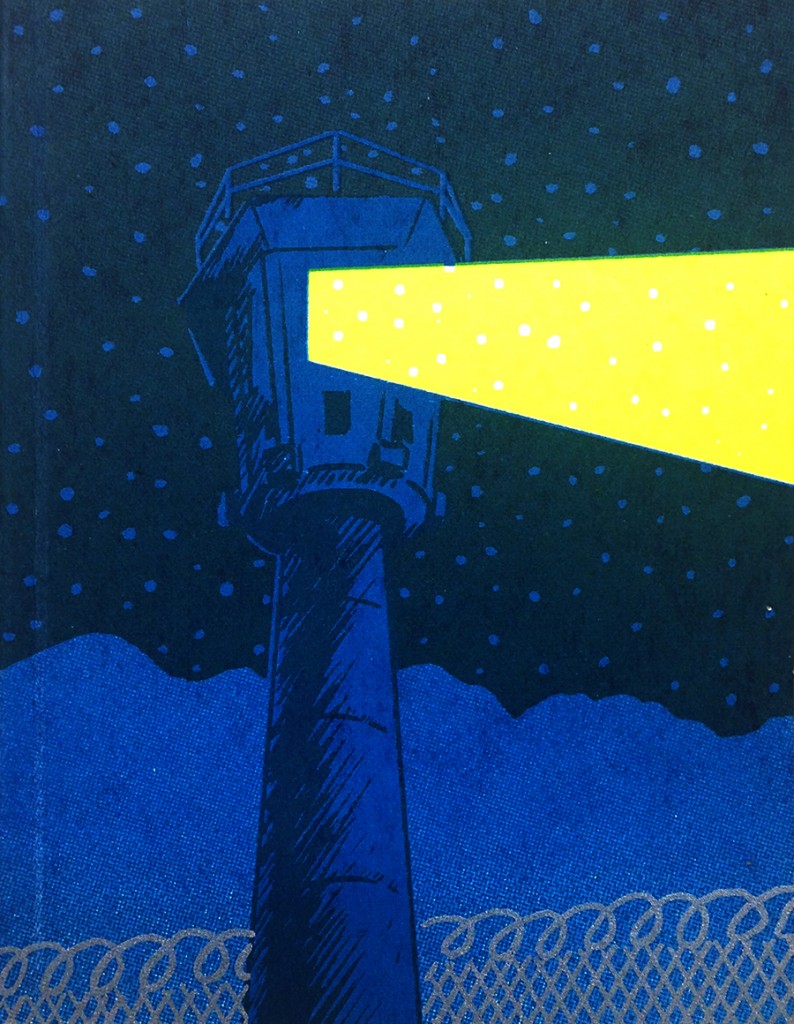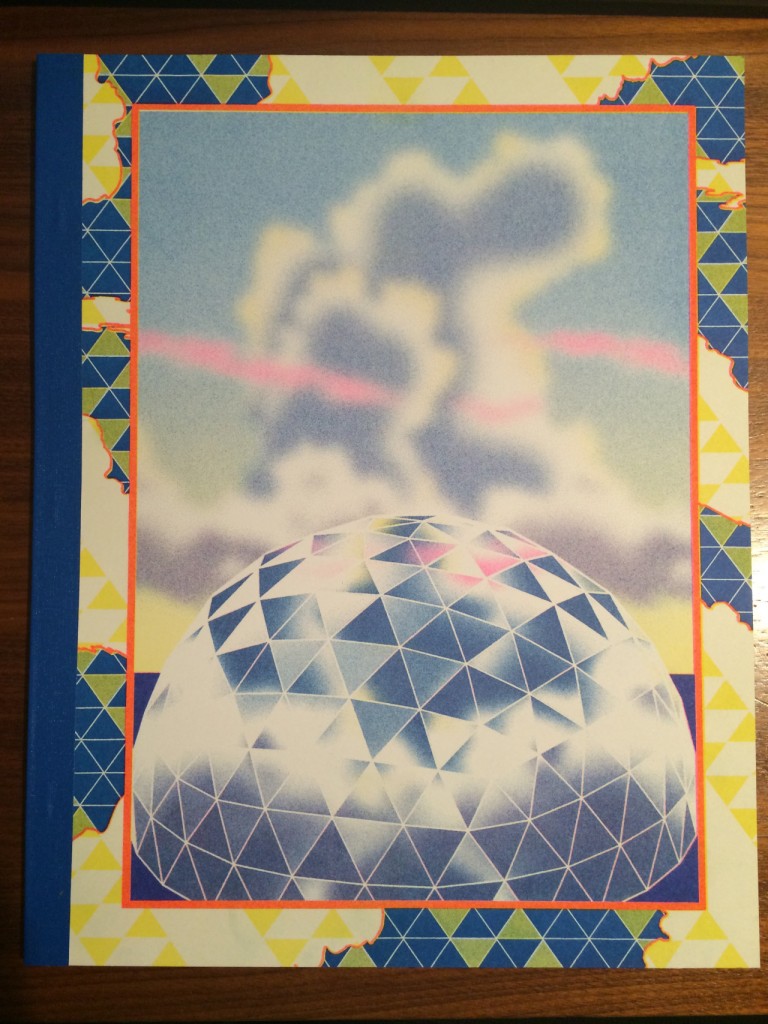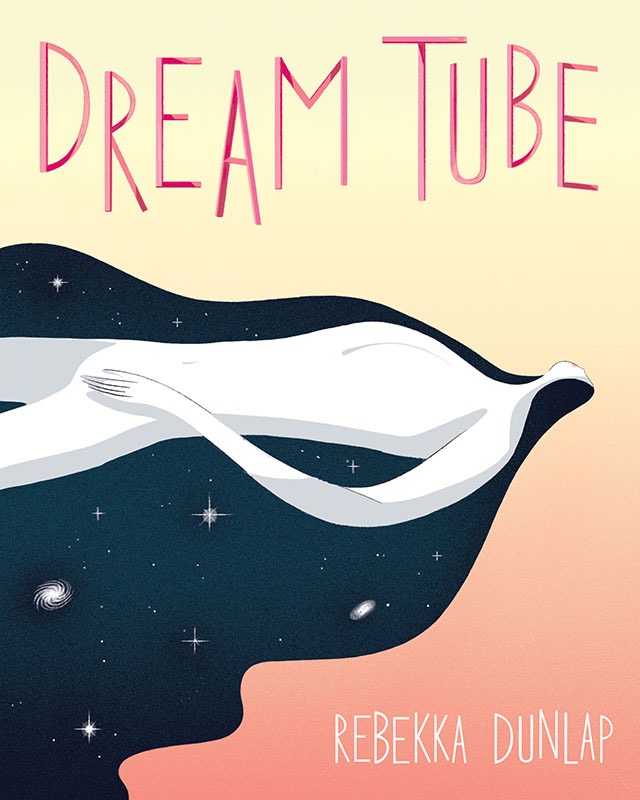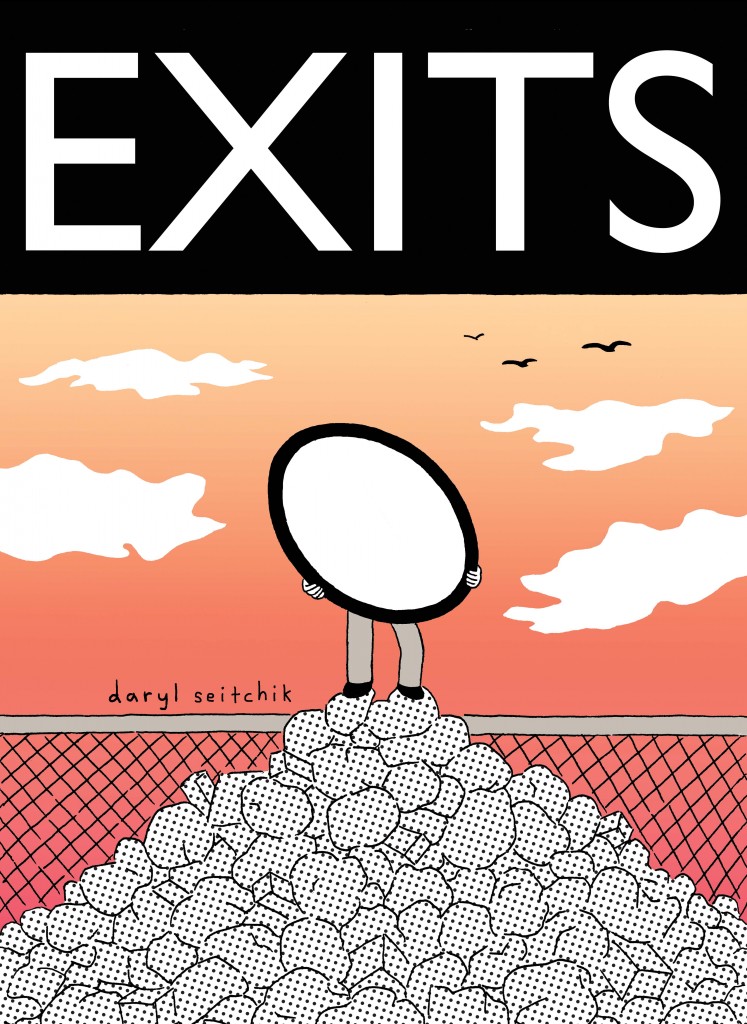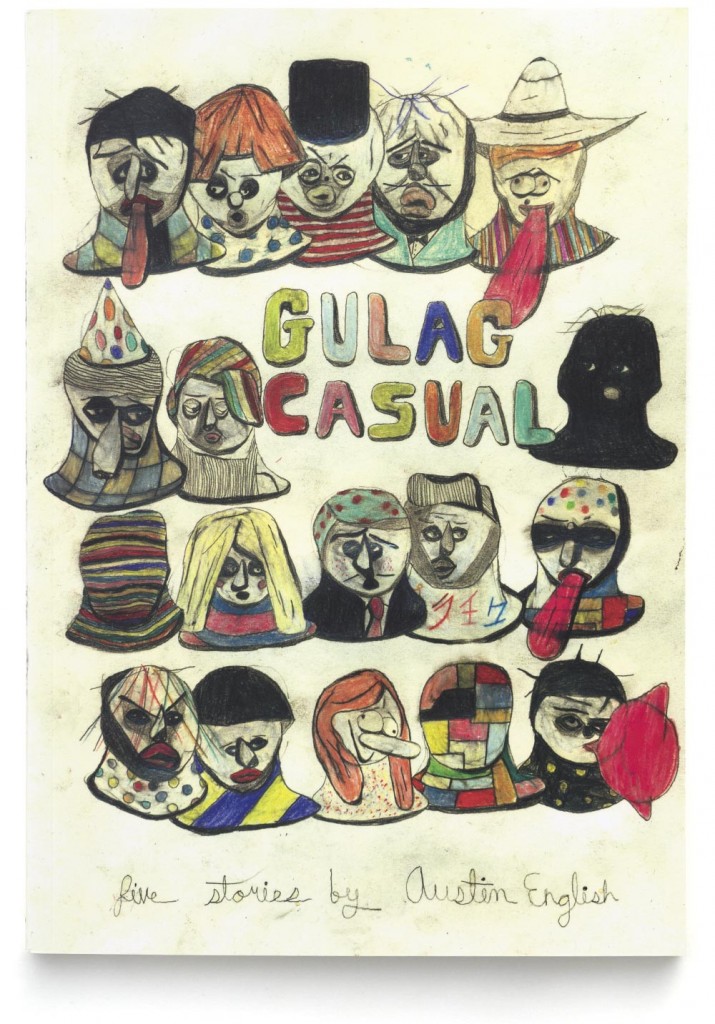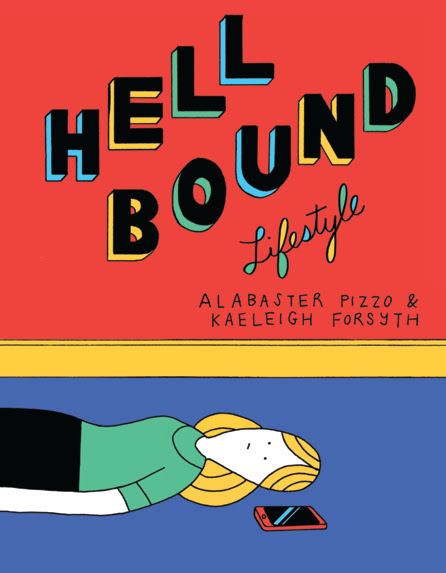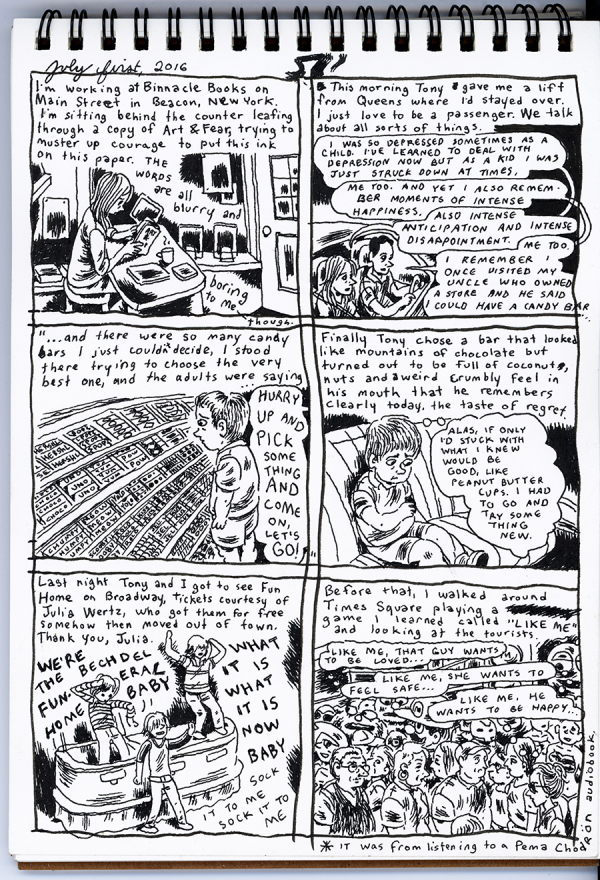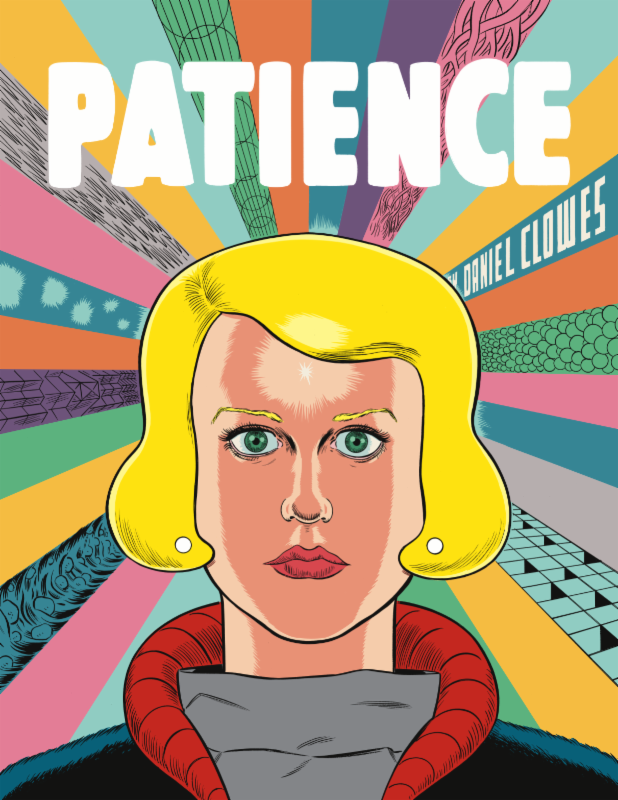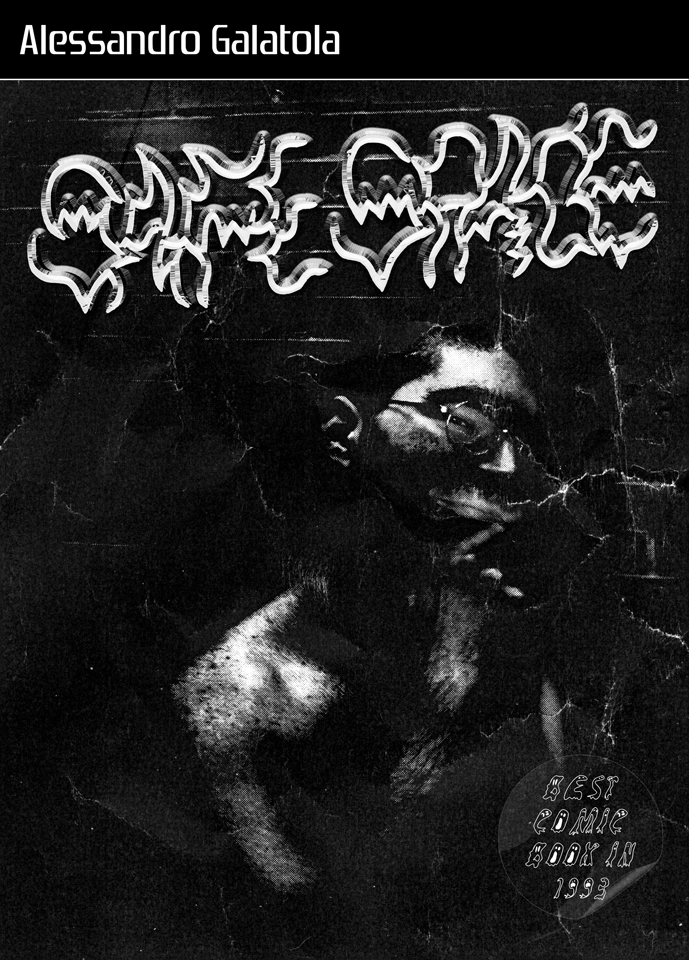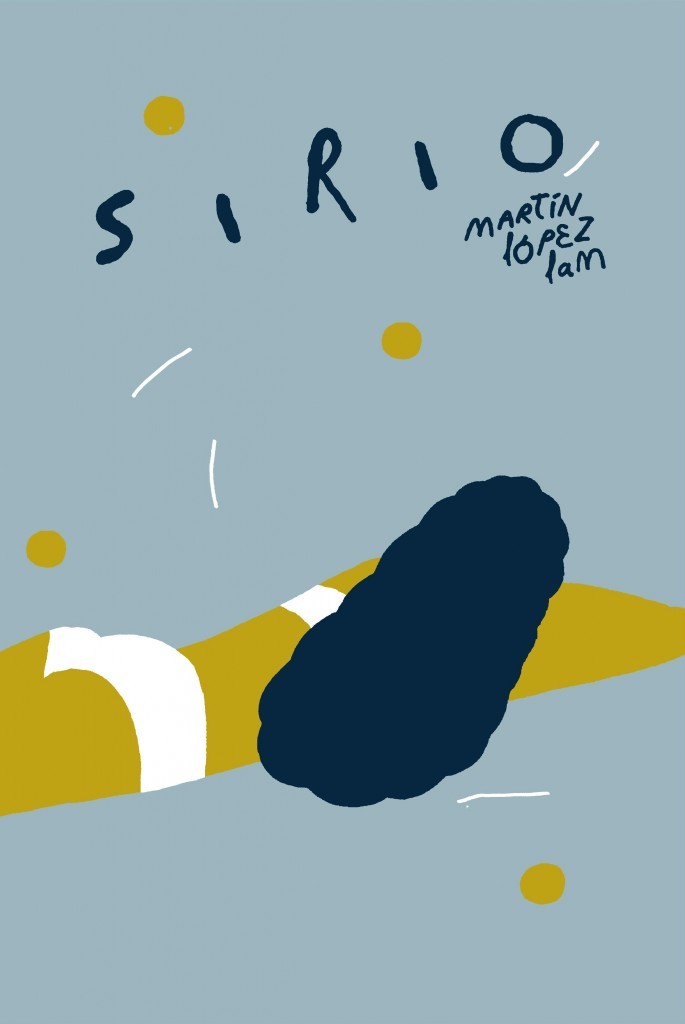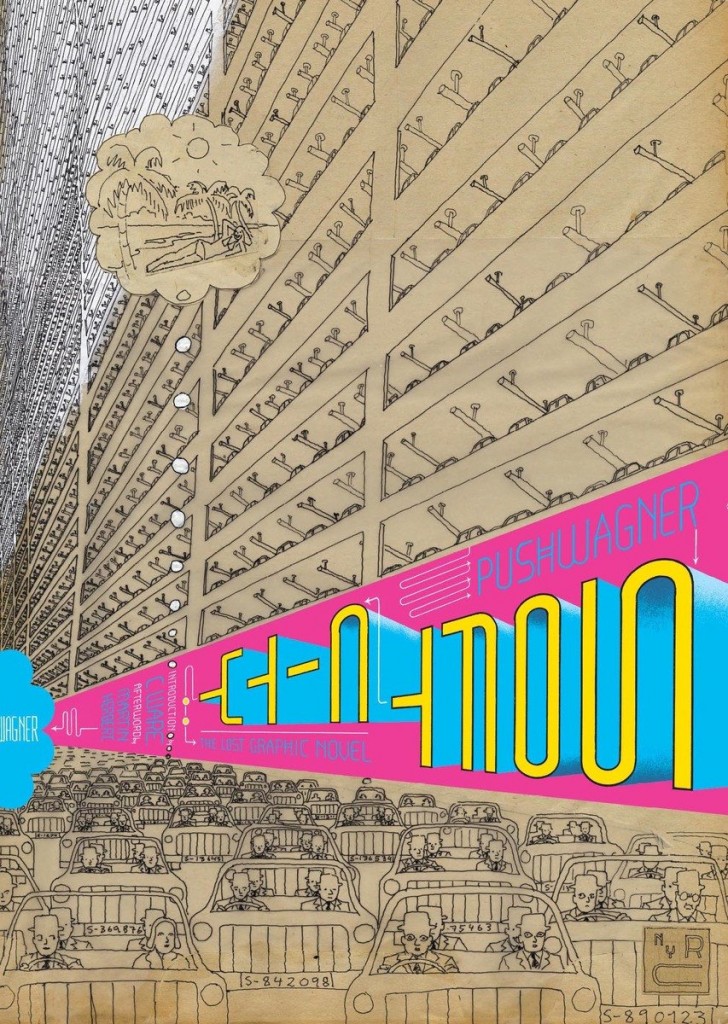Three comics by Anna Krztoń
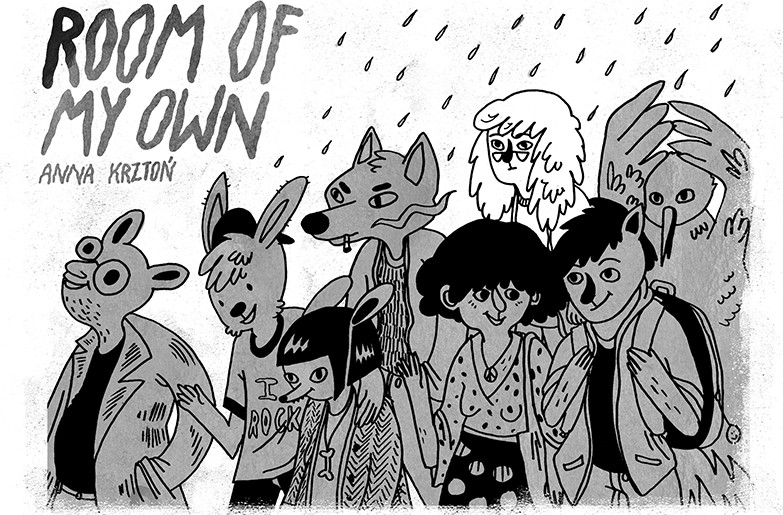
Anna Krztoń is a cartoonist and illustrator based in Warsaw, Poland, where she published various mini-comics by herself or with some local projects. She is also known outside her country for collaborations with international magazines and anthologies, such as Ink Brick, Dirty Diamonds, C’est Bon, Stripburger, Tieten Met Haar, Kuti Kuti, SW/ON. She’s currently working on her first graphic novel, which will be published by Wydawnictwo Komiksowe in 2018.
These three stories depict only some of the many nuances of her cartooning, starting with the realism we find both in Constant Sorrow and Early Mornings, similar for mood and topic to First Weeks, a self-published mini-comic I briefly reviewed in this Misunderstanding Comics episode (only in Italian, sorry). Room of My Own is instead a different work, less narrative and more impressionistic, an example of a dreamy mood, abstract and naive, that is an essential feature of Krztoń’s comics.
If you want to find more about Anna, you can have a look at her website. And some copies of First Weeks are available in the Just Indie Comics shop. For now, have a good read.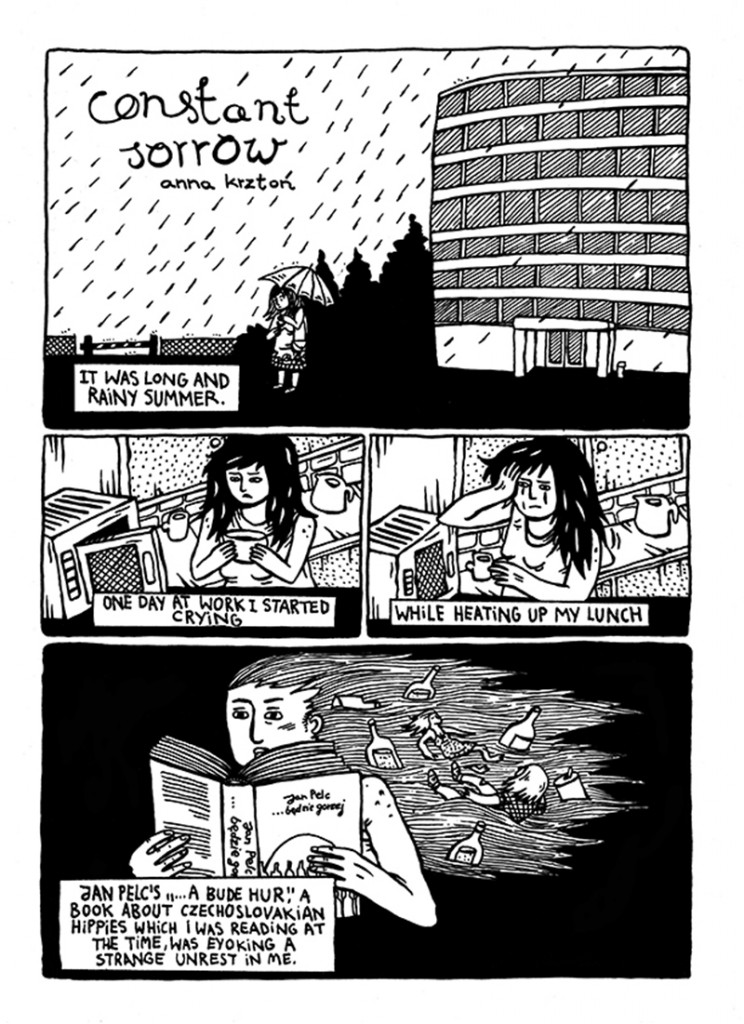
Tre fumetti di Anna Krztoń

Anna Krztoń è una fumettista e illustratrice polacca che vive attualmente a Varsavia, animatrice di una scena sempre più vivace e ricca di artisti, editori, autoproduzioni ed eventi. Oltre agli albetti che si è stampata per proprio conto e a quelli che ha pubblicato per piccole realtà locali, la Krztoń ha collaborato in questi ultimi anni a diverse antologie internazionali, come Ink Brick, Dirty Diamonds, C’est Bon, Stripburger, Tieten Met Haar, Kuti Kuti, SW/ON. Attualmente sta lavorando alla sua prima graphic novel, che uscirà per l’editore polacco Wydawnictwo Komiksowe nel 2018.
In queste tre storie sono rappresentate soltanto in parte le numerose sfumature della produzione dell’autrice, a partire da quella più propriamente realistica che troviamo sia in Constant Sorrow che in Early Mornings, simili per tono e tematiche a First Weeks, mini-comic autoprodotto di cui avevo detto brevemente in questa puntata di Misunderstanding Comics. Room of My Own è invece un lavoro diverso, meno narrativo e più impressionista, esemplificativo di un mood sognante, astratto e naif che è un elemento costante dei fumetti della Krztoń.
Se volete approfondire, vi rimando al sito di Anna e vi ricordo che alcune copie di First Weeks sono disponibili nello shop on line di Just Indie Comics. Per ora, buona lettura.
“Impatience” di Inés Estrada
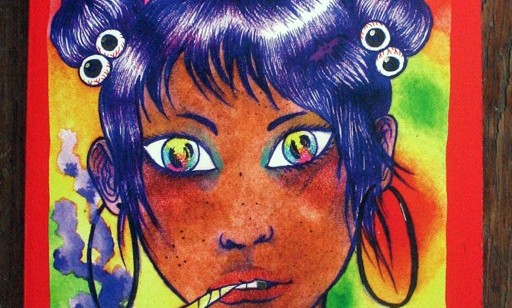
Nonostante i suoi 26 anni, la cartoonist messicana Inés Estrada ha già all’attivo un gran numero di storie a fumetti, di cui è difficile tener traccia dato che sono state pubblicate con vorticosa continuità tra comic book, zine, siti internet e antologie. Ad aiutarci a mettere ordine in questa vasta e variegata produzione ci pensa Impatience, volume di 200 e più pagine che sulle orme del precedente Ojitos Borrosos mette insieme una serie di episodi più o meno brevi realizzati tra il 2012 e il 2016 con l’aggiunta di qualche inedito.
Il volume dà conto della poliedricità della proposta della Estrada, con variazioni sensibili di tono e contenuto tra un fumetto e l’altro, che tuttavia sono sempre facce diverse della stessa medaglia, dato che la poetica dell’autrice è nel complesso già matura e sufficientemente focalizzata. Tra la divertente serie Ghost Girl vista on line su Vice, gli haiku in forma di striscia a fumetti destinati al magazine letterario The Believer e la polifonia di Sindicalismo #89, emergono episodi che si collegano l’uno all’altro e riconducono a temi preponderanti, su tutti il corpo femminile, che l’autrice esplora nel suo rapporto con se stesso, con l’altro sesso, con lo spazio circostante e soprattutto con la natura. Ne sono ottimo esempio il panteismo dell’introduttiva (e splendida) The Multiverse is inside of you e l’altrettanto riuscita Beeing, tratta dal mini kuš! Borrowed Tails, in cui assistiamo a un’autentica palingenesi.
Anche CS, originariamente pubblicata negli Stati Uniti da Sacred Prism, torna sul tema di corpo e natura mostrando un piccolo essere femminile – probabilmente un virus – innamorato del corpo umano che si trova ad abitare, mentre Cenote è un’esplorazione della sessualità che diventa ricerca di se stessi, avventura, visione.
Come detto non è questo l’unico tema di una raccolta variegata e ricca di stimoli contenutistici e anche visivi, basata su un approccio estetico che non ricerca la perfezione ma descrive con piglio underground, e spesso con ironia, il caos emotivo e materiale dei personaggi rappresentati. E infatti tra le immagini ricorrenti del libro ci sono le case e le stanze dei protagonisti, in cui i corpi si confondono tra cibo, bottiglie e oggetti della quotidianità.
Impatience è un volume di 206 pagine con testi in inglese e spagnolo (con sottotitoli). Autoprodotto, formato 15×20 cm, è stampato con inchiostro viola su carta opaca e copertina rossa con dettagli metallici. Qualche copia è ancora disponibile nel negozio on line di Just Indie Comics.
“Starchild” di Jim Pluk
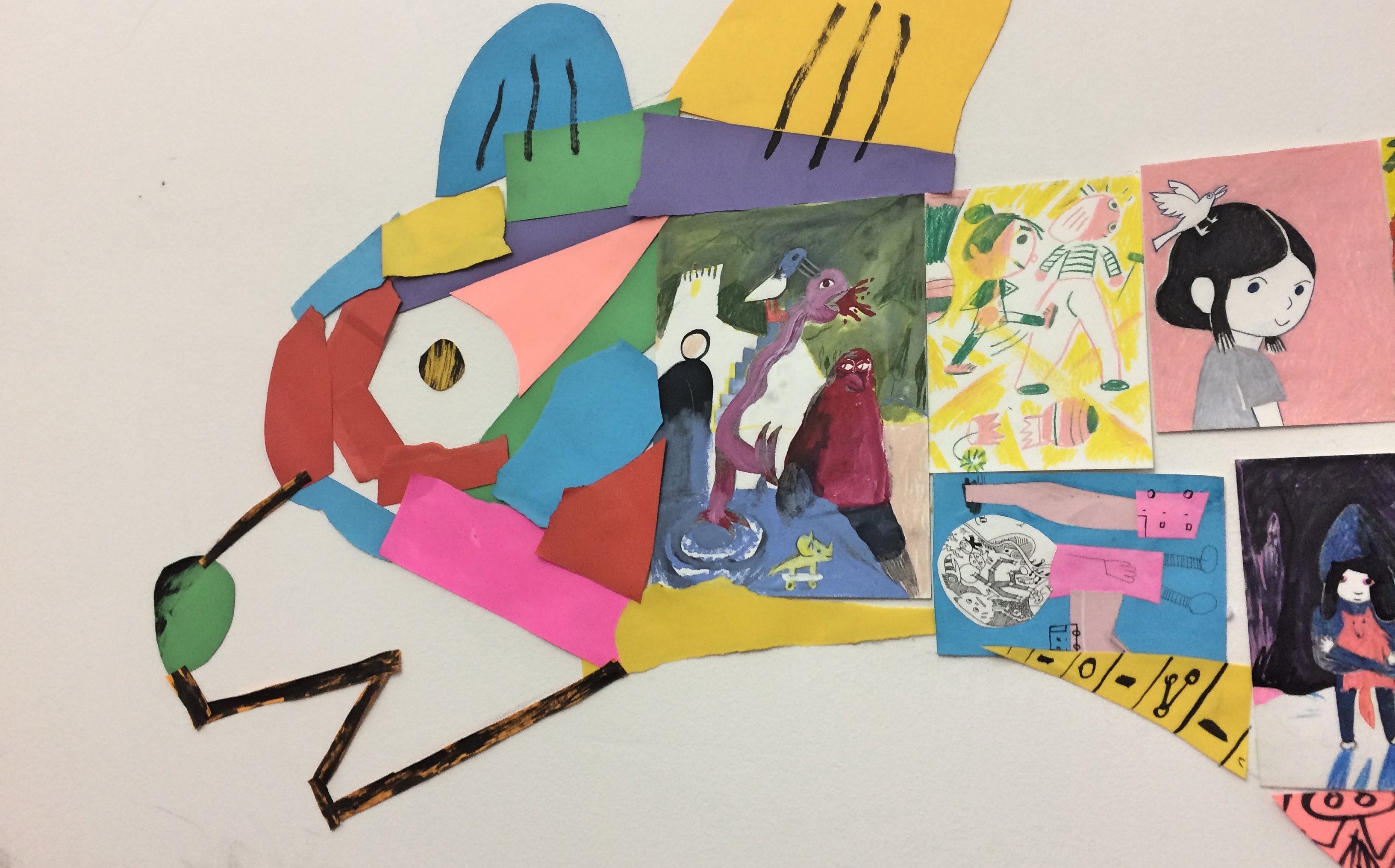
Nell’ultima tappa del suo tour europeo, l’11 febbraio a Roma negli spazi di Studio Pilar, l’artista colombiano Jim Pluk (di cui avevo già pubblicato il fumetto Si fuera un alma en pena) ha presentato la sua ultima fatica Canosa’s Welcome, edita dalla Perfectly Acceptable Press di Chicago, e una serie di illustrazioni intitolata Starchild. Quest’ultima non è né la classica personale che cerca di dare conto delle diverse modalità di espressione dell’autore né un’opera a tema che predilige un ambito ben preciso per escluderne altri. Anzi, si potrebbe dire che Starchild è l’una e l’altra cosa, dato che all’interno di un unico grande collage a muro sono raccolte tante illustrazioni, realizzate con tecniche e stili diversi, che rimandano a quanto fatto vedere da Pluk nei suoi fumetti e al tempo stesso stimolano lo spettatore sul tema della natura umana, delle sue origini e del suo futuro. Se non mancano alcune scene di vita quotidiana, caratterizzate per lo più dalla presenza degli animali, a dominare sono soprattutto i contatti tra l’uomo e altre forme di vita, espressione grafica dell’interesse preponderante del nostro per il mistero, l’ignoto, l’alieno. Il tema non a caso ritorna in Canosa’s Welcome, dove viene messo in scena l’incontro tra la bambina protagonista e due extraterrestri. E a sentire quanto raccontato nel corso dell’incontro presso Studio Pilar, anche le future opere a fumetti di Pluk rimarranno nello stesso territorio, dato che ha annunciato una nuova storia incentrata sulla teoria della Terra Cava. Intanto godetevi un po’ di foto che sembrano la trasposizione in toni colorati e cartoon di un universo che – come diceva qualcuno – non è terrestre.
Foto di Serena Dovì
“Vortex” e “Love Nest” di Charles Burns
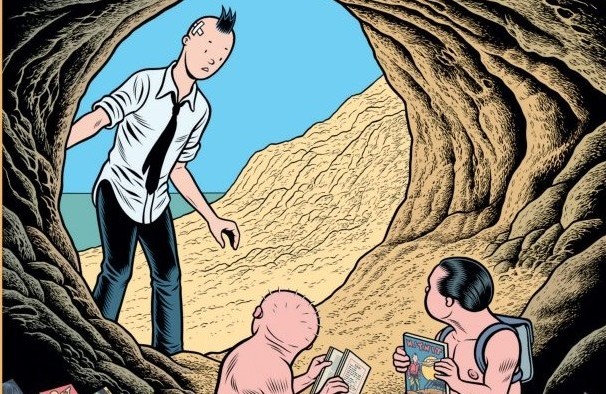
Vortex e Love Nest, usciti lo scorso novembre per Cornélius, sono le ennesime sorprese di Charles Burns per i suoi fan, nuovi capitoli di un periodo particolarmente ricco di pubblicazioni e iniziative intorno all’autore di Black Hole. Negli ultimi due anni si sono infatti susseguite una serie di uscite burnsiane legate per lo più all’aspetto figurativo del suo mondo. Di Incubation – sketchbook che riprendeva le fasi di lavorazione della trilogia Last Look – e Free Shit – volumetto pubblicato da Le Dernier Cri che ristampava le fanzine regalate dall’autore ad amici e appassionati – ho parlato rispettivamente nella seconda e nella sesta puntata di Misunderstanding Comics. Vortex è invece un volume che riprende sin dall’elegante formato hardcover e dalla colorazione l’estetica dei libri della trilogia. Non si tratta di uno sketchbook come il precedente Incubation, perché qui troviamo disegni e pagine compiute, con lo stesso stile (e la stessa qualità) degli ultimi fumetti di Burns. E non possiamo nemmeno definirlo un semplice artbook, perché i diversi contenuti non si limitano a mostrare ma servono piuttosto a espandere, ramificare e arricchire l’universo stratificato creato da Burns in X’ed Out e The Hive e poi sbocciato in tutta la sua perfezione e chiarezza in Sugar Skull. La connessione tra pagina e pagina è suggerita senza essere esplicitata, è pre-logica, non cerca il significato ma l’atmosfera, stabilendo un legame tra i singoli elementi che solo chi ha letto Last Look può veramente apprezzare. Degna introduzione a tutto ciò due pagine di fumetto vero e proprio, con un testo lirico e denso che ha il compito di calare di nuovo il lettore tra le pieghe delle trilogia.
Si prosegue con finte copertine ispirate graficamente a Tin Tin, manga immaginari, illustrazioni già utilizzate per le cover di alcuni quaderni, pagine scritte nello stesso linguaggio alieno inaugurato nell’albo Johnny 23 uscito nel 2010 per Le Dernier Cri, finti magazine a sfondo erotico, illustrazioni di vario formato, cartoline, fotoromanzi, balloon senza testo, romance comics che si spingono al di là del consentito.
Proprio a tema romance è Love Nest, di formato più piccolo (15×17 cm) e uscito come il precedente in occasione di una mostra alla Galerie Martel di Parigi. Qui non c’è riferimento a un’opera specifica, anche se ovviamente l’immaginario è tutt’altro che alieno da quanto realizzato dal nostro nel corso della sua carriera. Il volume raccoglie 124 illustrazioni in bianco e nero che fanno collidere l’immaginario di film e fumetti a sfondo romantico del periodo ’50-’60 con quello dei b-movies dell’epoca. Detto così sembrerebbe un ritorno alle origini, alle pagine di El Borbah, Big Baby e Skin Deep, o anche una sorta di Black Hole vent’anni prima, eppure l’approccio è stavolta diverso, perché Burns non fa un lavoro di strutturazione dei contenuti ma giustapponendo semplicemente un’immagine all’altra si immerge completamente in questo habitat. Anche il tratto rompe di tanto in tanto i soliti schemi, abbandonando gli usuali tratteggi e sfumature a favore di una linea più spessa e pulita, perfetta mimesi dei fumetti (e in seguito della pop art) di quel periodo. Più organico del precedente, Love Nest è un progetto capace di affascinare e a volte di inquietare, grazie a illustrazioni che osano molto di più di quanto si potesse fare ai tempi dei romance comics, tra donne che si baciano, volti sfigurati, nudità, voyeurismo ed esseri deformi che si insinuano nei meandri della vita di provincia americana. Qui sotto alcune foto del volume. Buona visione.
Minicomic of the Month Club 2017

Since a couple of years I have launched the Just Indie Comics Buyers Club, an annual subscription service available only for Italian people that allows to get in the mail four or eight comics during the year. The idea of a subscription service based on a “philosophy” has always intrigued me and so I am pleased to report a similar project coming from Australia, called Minicomic of the Month Club. Now at its 5th edition, the club aims to send to subscribers 12 A6 mini-comics per year. Every monthly mini-comic will be created by an Australian cartoonist. This year’s list includes very different artists, since the project wants to tell the richness and variety of the scene. We have the graphic journalism by Eleri Harris – already known for her work on The Nib and author of the first mini of the series – the surrealist forms of Sean Ed Whelan, the comics-as-poetry by Leonie Brialey and the cartoon characters created by Jake Lawrence. Below you can see some pictures taken from the previous works of these artists, while you can find a complete list of the creators on the Minicomic of the Month Club website. And here you can read some interviews.
If you are interested it’s better to sign up now, because the deadline is at the end of January. The price is 38 Australian dollars for domestic order, 40 for New Zealanders and 52 (about 37 €, or 40 US dollars) for international orders. Have a good mini-read.
Minicomic of the Month Club 2017

Da un paio di anni ho lanciato il Just Indie Comics Buyers Club, un abbonamento annuale che permette di ricevere quattro o otto fumetti a cadenza trimestrale durante l’anno. La formula della sottoscrizione a un servizio basato su una filosofia più che su contenuti prestabiliti mi ha sempre incuriosito e mi fa dunque piacere segnalare un altro progetto simile, intitolato Minicomic of the Month Club e proveniente dall’Australia. Giunta già alla quinta edizione, l’iniziativa si propone di inviare durante l’anno 12 mini-comics formato A6 realizzati da cartoonist australiani per lo più sconosciuti da questo lato del mondo. Si tratta di autori molto diversi tra loro, dato che il progetto non intraprende una precisa ricerca stilistica ma cerca di raccontare piuttosto la ricchezza e l’eterogeneità di una scena. Si va così dal graphic journalism di Eleri Harris – già vista all’opera su The Nib e autrice del primo fumetto della serie – alle forme surrealiste di Sean Ed Whelan, dai comics as poetry di Leonie Brialey al mondo cartoon di Jake Lawrence. Qui sotto potete vedere qualche immagine tratta dai precedenti lavori degli autori appena citati, mentre sul sito del Minicomic of the Month Club trovate la lista di tutti gli artisti con relativi link. E qui potete leggere una serie di interviste di approfondimento.
Se siete interessati iscrivetevi subito, perché il termine per abbonarsi scade a fine gennaio e i prezzi sono più che ragionevoli: 38 dollari australiani per i connazionali, 40 per i neozelandesi e 52 (circa 37 euro) per tutti gli altri, Europa compresa. Buona mini-lettura.
“Si fuera un alma en pena” di Jim Pluk
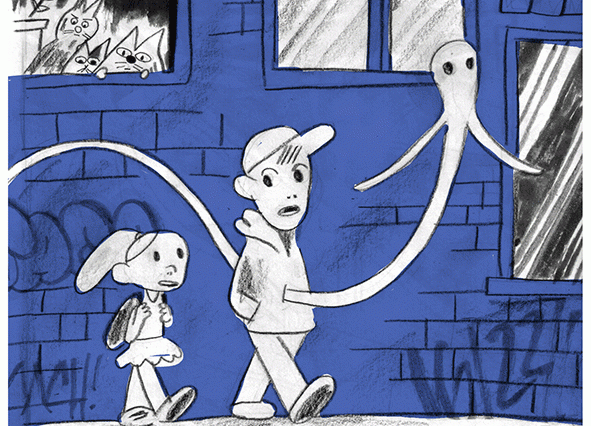
Jim Pluk è un autore di fumetti divertenti, fantastici, a modo loro anche poetici, caratterizzati da una linea rotonda e grezza che rivisita con piglio punk lo stile dei gag cartoon. L’artista colombiano, visto all’opera anche su Vice, sta arrivando in Europa per una serie di date in cui presenterà il suo nuovo fumetto Canosa’s Welcome, edito dalla Perfectly Acceptable Press di Chicago, e mostrerà i suoi dipinti e disegni. Si inizia venerdì 20 gennaio alla libreria Fatbottom di Barcellona per poi proseguire il 22 gennaio a Lione, il 3 febbraio a Berlino negli spazi della galleria/negozio Neurotitan e l’11 febbraio a Roma presso Studio Pilar. Qui trovate qualche dettaglio in più sul tour. Intanto godetevi Si fuera un alma en pena (If I was a Suffering Soul), un fumetto pubblicato nel novembre 2015 in Colombia da Calipso Press, ironico, delicato e poetico. Buona lettura.
“If I was a Suffering Soul” by Jim Pluk

Jim Pluk is an author of funny and fantastic comics, poetic in their very own way, marked by a round and raw line that revisits with a punk approach the gag cartoon-style. The Colombian cartoonist, who worked for Vice and published the graphic novel Josefina, is coming in Europe to present his comic Canosa’s Welcome and to exhibit some of his paintings and drawings. The first date is Friday January 20 at Fatbottom Books in Barcelona, then the tour will continue January 22 in Lion, February 3 in Berlin at the Neurotitan shop/gallery and February 11 at Studio Pilar in Rome. You can find more details about the events here. In the meantime you can read If I was a Suffering Soul, a comic published in November 2015 by Calipso Press, ironic, sensitive and lyrical. Enjoy!
Best 16 comics of 2016
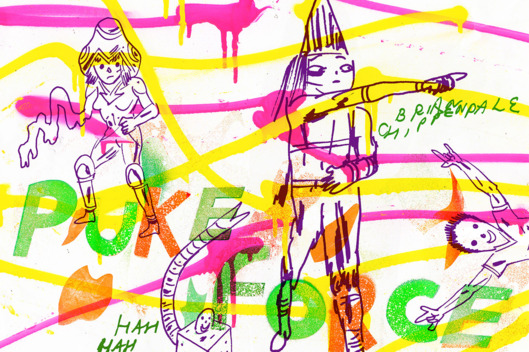
A year ago I published three lists of good 2015 comics, split in international graphic novels, foreign mini-comics and Italian books. Last year I’ve been a little lazy and so I’m just posting a list of 16 books I really liked among those I managed to read. Yes, the number is a bit strange but 10 seemed too few and 20 too much, and 15 + 1 is a good number in a year marked by the publication of the new comic by Daniel Clowes, for me always out of competition. And then 16 for 2016 sounds good. I didn’t make any distinction of genre, nationality, size and date of publication: you will find in this list new comics, reprints, anthologies, oversized books and minis. And as usual they’re mostly North-American books, as the name of this website easily suggests.
Agony by Mark Beyer (New York Review Comics) – Straight from 1987, when it was published as one-shot of Raw magazine, this essential little book by Mark Beyer comes back in an edition substantially identical to the original one, thanks to New York Review Comics. The story follows the adventures of Amy and Jordan, the two protagonists who in these 173 pages are fired, chased, decapitated, dismembered, thrown underground, launched in the air and so on, in a succession of misfortunes cleverly depicted by a brut and unconventional line.
Amore di lontano by Martoz (Canicola Edizioni) – Martoz was already in the 2015 list with Remi Tot in Stunt published by MalEdizioni and this year the young Italian cartoonist struck again with a new thick book published by Canicola. Amore di lontano is a chivalric poem looking both at Italian popular comics and at artists like Battaglia, Toppi, Crepax and Pratt, with these influences exploding in cubist and hyperkinetic panels. But the experimental approach is only one of the aspects of the book, because this is essentially a love story. In this post you can watch some original artworks by Martoz (the text is only in Italian, sorry!).
Beverly by Nick Drnaso (Drawn and Quarterly) – This collection of six short comics by Nick Drnaso loosely interconnected combines the formal rigidity of Chris Ware with the themes of Todd Solondz’s films to describe the difficulty of relating to each other. Hidden cruelties, racism, hypocrisy and existential vacuum are told without sensationalism, with a deliberately monotonous style in both design and content. For me one of the discoveries of the year, a work of an author who, at age 27, is already more than just a promise.
Blammo #9 by Noah Van Sciver (Kilgore Books) – Someone will notice I’m obsessed with the same cartoonists, but how can I keep out the new issue of Blammo from this list? Van Sciver alternates autobiography, adaptations of fairy tales, comical interludes, and the vicissitudes of “his” losers using the typical versatility. Furthermore, in the ten-pager set in White River Junction during the residence at the Center for Cartoon Studies, he introduces a more free and fluid structure than usual, suggesting new and interesting developments for his future comics.
Christmas in Prison by Conor Stechschulte (self-published) – Just like Van Sciver, Conor Stechschulte is another artist I’ve often talked about here at Just Indie Comics. This 96-page booklet is carefully printed and hand-bound using various techniques (risograph, silkscreen, offset) and collects a series of “pieces” about Stechschulte’s recurring topics, such as voyeurism, control and metanarrative. The different features culminate in the last one, that begins with a narrative structure to flow into a series of existential questions of increasing intensity, confirming Stechschulte as one of the best contemporary cartoonists.
Dôme by various artists (Breakdown Press/Lagon) – I was pretty disappointed from the latest Kramers Ergot, so the year’s best anthology is for me Dôme, an English-French production published by Lagon and Breakdown Press. This large-format book was printed in risograph during the 2016 Angoulême festival. Inside its 40 pages we find short stories by artists such as Lando, Simon Hanselmann, Dash Shaw, Antoine Cossé, Michael DeForge, Olivier Schrauwen, Joe Kessler, Richard Short. The high quality standard and the idea of proposing in the central pages new strips of the different stories help to create an example of really rare aesthetic coherence. The anthology was printed in 500 copies and is now sold-out. You can read more here.
Dream Tube by Rebekka Dunlap (Youth In Decline) – One of the most pleasant surprises of 2016, this book published by Youth In Decline collects three stories by Rebekka Dunlap, clearly contemporary for style and content but that for spirit and mood seem to come straight out of an old issue of Garo. Among new technologies, sorcery and science fiction the pages go on for associations of ideas, interludes and digressions, creating a visual stream of consciousness that draws the reader into a world impossible to understand completely but incredibly fascinating.
Exits by Daryl Seitchik (Koyama Press) – First long-form comic by Daryl Seitchik, best known for the series Missy, Exits showcases her usual themes overturning the aesthetic dimension. The initial idea of the girl who becomes invisible seems à la DeForge but the development is quite different. Exits is a seemingly simple but actually deep coming of age tale, mature and rich in its different levels, able to convey that sense of funny existential anxiety that is Seitchik’s trademark. It shows the growth process of a young artist who already likes to experiment and change herself.
Gulag Casual by Austin English (2dcloud) – Using an uncoventional aesthetics, inspired more by the avant-gardes and abstract expressionism than by other comics, Austin English tells stories of everyday tensions, in which aggressive forces from outside invade familiar and comforting spaces. But there isn’t a real drama in these pages, because the characters are figures performing actions and not subjects with their own personality, as if the power of art could soften pain and anxiety. Gulag Casual is another hit from Minneapolis-based 2dcloud.
Hellbound Lifestyle by Alabaster Pizzo & Kaeleigh Forsyth (Retrofit Comics) – Despite a subtle sensation of confusion and depression, Hellbound Lifestyle is the funniest work in this list. Alabaster illustrated the notes Forsyth wrote on her phone, creating a hilarious chronicle full of absurd situations, good intentions gone bad, strange thoughts and ideas, ideas, ideas one after the other that you could fill many other comics or complete seasons of TV series. One of those comics that, when you read them, make your day better.
July Diary by Gabrielle Bell (gabriellebell.com) – In 2015 there was no July Diary by Gabriele Bell and I was very pleased this year when I saw the return of her daily comics, because she is simply one of my favorite cartoonists ever. In addition the new diary, recently published with the title Get Out Your Hankies, experiences utter spontaneity, since the artist has given herself the rule to avoid any kind of editing and rewriting. If you still haven’t, read it while waiting for Everything is Flammable, the new unpublished 160-page comic out next April for Uncivilized Books.
Patience by Daniel Clowes (Fantagraphics Books) – The long-awaited new graphic novel by Daniel Clowes didn’t get so enthusiastic reviews after all, probably because it’s a sort of blockbuster version of Clowes’ stories, with a more conventional structure and less detailed drawings than usual. Yet for me these aren’t flaws but accurate choises that make Patience not only another masterpiece by the author of Ghost World and David Boring but also his most poignant work, the one that most of all succeeds to move the reader.
Puke Force by Brian Chippendale (Drawn and Quarterly) – Serialized years ago on the Picture Box website, Puke Force was left unfinished for a long time, without ever being published in print. Tom Devlin, former Highwater Books and now at Drawn and Quarterly, convinced Chippendale to put aside for a while sticks and microphone (he is one half of Lightning Bolt) to conclude this slacker-fantasy tale, maybe the best output from ex-Fort Thunder group along with Multiforce by Mat Brinkman. And the recent release of a new self-published mini-comic, the excellent Atrophy Life, raises hopes for a Chippendale’s return to the world of comics on a permanent basis.
Safe Space #2 by Alessandro Galatola (self-published) – One of the best Italian comics of the year doesn’t really exist, at least for now. Self-printed in only 10 proofs, Safe Space #2 is still looking for a publisher. Alessandro Galatola joins the new frontiers of cartooning with the outré design of the 80’s creating his own style made of a dense and unconventional writing. I talked recently about the book in this post, where I published one of these short stories, Dio di me stesso. Out of any conventions and of the neorealism typical of many Italian graphic novels, these are visceral comics that come straight from the soul of their young creator.
Sirio by Martin López Lam (Fulgencio Pimentel) – Martin López Lam is a Peruvian cartoonist who is living in Spain for a long time, where he runs Ediciones Valientes and the Tenderete festival. He is also well known in Italy for the many projects he worked on during the residency at the Academy of Spain in Rome and the latest BilBOlbul festival in Bologna. All this activism should not lead to forget his artistic outputs, of which Sirio is a great example. Beautifully illustrated in shades of blue and ochre, it begins as a noir but goes on describing hesitant and indolent characters who wander around themselves in a sweltering summer, waiting for something new. And, as it happens sometimes, the wait is more fascinating than a thousand stories.
Soft City by Pushwagner (New York Review Comics) – Another remarkable rescue by the New York Review Comics, this elegant hardcover designed by Chris Ware reprints the book published in Norway by No Comprendo Press. It was the beginning of the ’70s when Norwegian artist Pushwagner gave life to an almost wordless comic full of men living in huge residential complexes with their middle-class families, going to work in their cars identical to one other and living a perfectly “normal” life. One of the best representations of urban alienation in comic form, with soft and liquid lines serving as metaphors of the conformism that creeps under the skin of modern man. I had briefly talked about this book here, on the occasion of Pushwagner exhibition at the Fumetto Festival 2015 in Lucerne.

